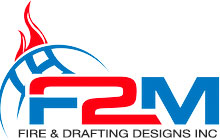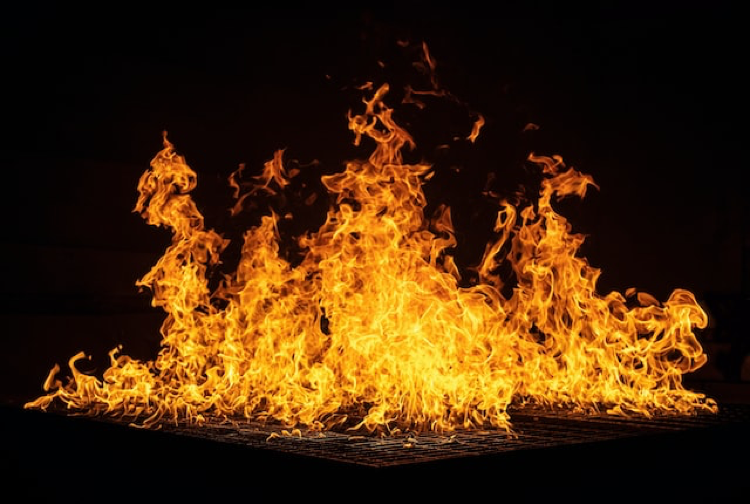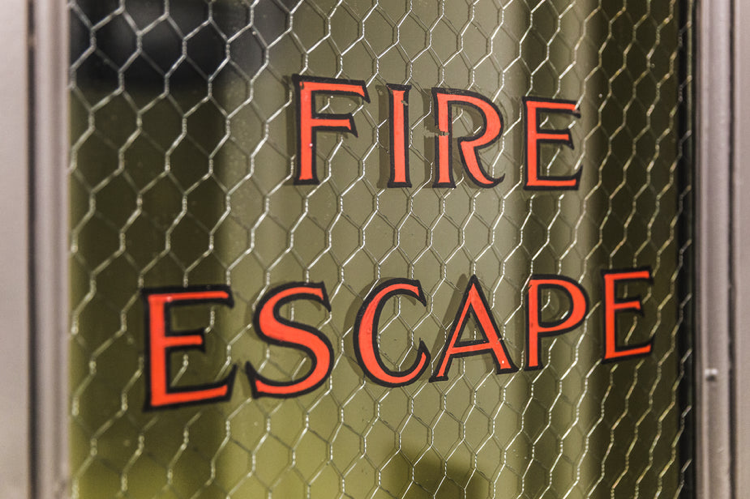Fire Sprinkler System Design
Fire Sprinkler System Design for High-Risk Environments: Key Considerations
Fire sprinkler systems design for high-risk environments requires careful planning and specialized knowledge. These environments, which include industrial facilities, chemical plants, and data centers, present unique challenges that demand robust and reliable fire protection solutions. In this blog post, we will explore the key considerations for designing fire sprinkler systems in high-risk environments.
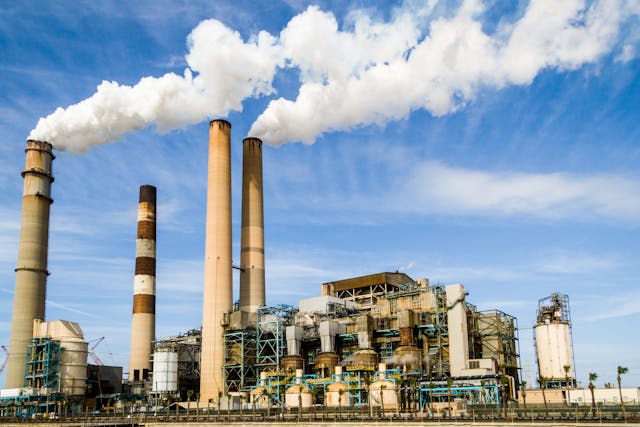
Understanding the Unique Risks
Identify Fire Hazards
The first step in designing an effective fire sprinkler system is to identify the specific fire hazards present in the environment. Consider:
- The types of materials and substances that could ignite, such as flammable liquids, chemicals, or electronic equipment.
- The processes and activities that could potentially cause a fire.
- The historical data on fire incidents within similar environments.
Assess Fire Load
Understanding the fire load, or the amount of combustible material present, is crucial for selecting the appropriate fire suppression system. High fire loads require systems that can deliver sufficient water or suppression agents to control or extinguish fires effectively.
Choosing the Right Fire Suppression System
Water-Based Systems
Water-based fire sprinkler systems are a common choice for many high-risk environments due to their reliability and effectiveness. Key options include:
- Wet Pipe Systems: Ideal for environments where freezing is not a concern, providing quick response to fires.
- Dry Pipe Systems: Suitable for areas prone to freezing, with pipes filled with pressurized air until activated.
- Deluge Systems: Designed for high-hazard areas, providing rapid and extensive water coverage when activated.
Foam-Based Systems
Foam-based fire suppression systems are effective for environments with flammable liquids and chemicals. Options include:
- Foam Sprinkler Systems: Combines water with foam concentrate to create a foam blanket that smothers the fire and prevents re-ignition.
- High-Expansion Foam Systems: Generates large volumes of foam to fill an entire room or area, ideal for enclosed spaces.
Gas-Based Systems
Gas-based fire suppression systems are suitable for environments with sensitive equipment and electronics. Options include:
- Inert Gas Systems: Uses gases like nitrogen and argon to displace oxygen and suppress fires without damaging equipment.
- Chemical Gas Systems: Uses agents like FM-200 or Novec 1230 to extinguish fires quickly and safely.
System Design and Layout
Customizing the Design
High-risk environments often require customized fire sprinkler system designs to address specific risks. Considerations include:
- Coverage: Ensuring all areas of the environment are adequately covered by the sprinkler system.
- Spacing: Proper spacing of sprinkler heads to ensure uniform water or agent distribution.
- Accessibility: Ensuring that sprinkler system components are accessible for maintenance and inspection.
Hydraulic Calculations
Accurate hydraulic calculations are essential to ensure the fire sprinkler system can deliver the required flow and pressure to control or extinguish a fire. Key factors include:
- Determining the required water or agent flow rate for the specific fire risk.
- Calculating pressure losses in the piping system to ensure adequate pressure at the sprinkler heads.
Compliance with Regulations
Meeting Safety Codes
Compliance with local, state, and national fire safety codes is critical for the design and installation of fire sprinkler systems in high-risk environments. Key standards include:
- National Fire Protection Association (NFPA) standards, such as NFPA 13 for sprinkler systems and NFPA 16 for foam systems.
- Local building and fire codes specific to the environment and industry.
Regular Inspections and Maintenance
High-risk environments require regular inspections and maintenance to ensure the fire sprinkler system remains operational. Best practices include:
- Monthly visual inspections of system components.
- Quarterly checks of alarm systems and control valves.
- Annual professional inspections and testing of the entire system.
Fire Sprinkler System Design for High-Risk Environments: Conclusion
Designing fire sprinkler systems for high-risk environments requires a thorough understanding of the unique risks, careful selection of the appropriate suppression system, and meticulous planning of the system layout. By considering these key factors, you can ensure that your fire sprinkler system provides reliable and effective protection for your high-risk environment.
At F2M Fire & Drafting Designs Inc., we specialize in designing and installing fire sprinkler systems for high-risk environments. Contact us today to discuss your specific fire protection needs and find the best solution for your facility.
F2M Fire & Drafting Designs Inc.
31 South Street, Suite 3S-4
Mount Vernon, NY 10550
(718) 928-3009
Email: info@f2mfadds.com
https://www.f2mfadds.com/contact
Let our experts help you design a fire sprinkler system that provides robust and reliable protection for your high-risk environment.
Happy Thanksgiving from F2M!
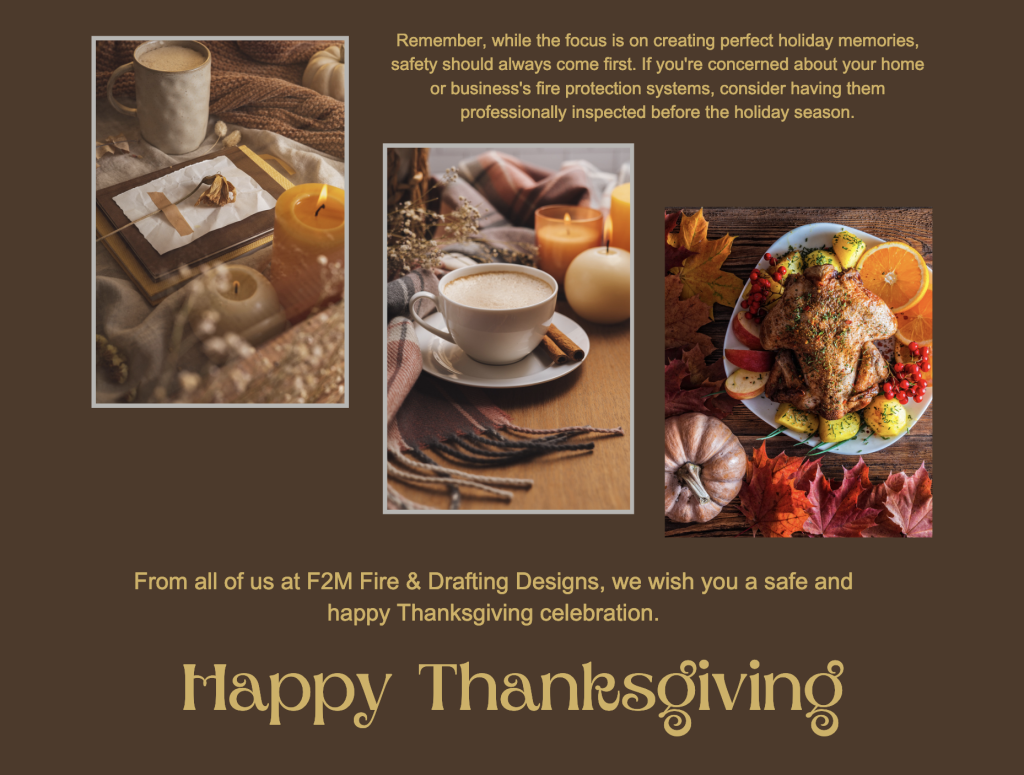
Innovative Fire Sprinkler Design Techniques for Modern Buildings
Let’s explore some of the cutting-edge fire sprinkler design techniques that are being implemented in modern buildings. In the ever-evolving landscape of modern architecture, ensuring fire safety remains a critical priority. Fire sprinkler systems are a cornerstone of building safety, and innovative design techniques are continuously being developed to enhance their effectiveness.
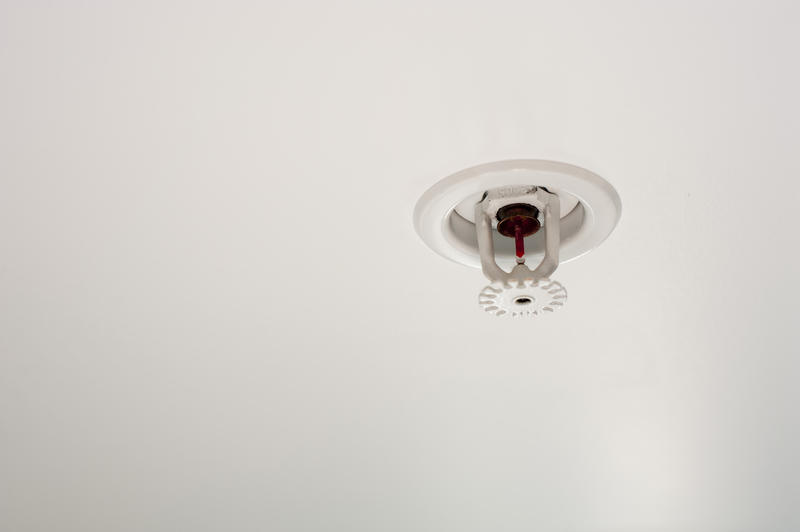
Fire Sprinkler Design Techniques for Modern Buildings
Advanced Detection Systems
Smart Sensors
Modern fire sprinkler systems are now incorporating smart sensors that can detect various fire indicators such as heat, smoke, and even gases. These sensors offer several advantages:
- Early detection of fires, allowing for quicker response times.
- Reduction in false alarms, minimizing disruptions.
- Integration with building management systems for automated responses.
Artificial Intelligence (AI)
AI-driven fire detection systems analyze data in real-time to differentiate between actual fire threats and false alarms. Benefits include:
- Improved accuracy in fire detection.
- Reduced number of false alarms.
- Enhanced decision-making during emergencies.
Enhanced Suppression Technologies
Water Mist Systems
Water mist systems are an innovative approach to fire suppression, using fine droplets of water to control fires. These systems offer:
- Effective fire suppression with minimal water damage.
- Enhanced safety for occupants and property.
- Eco-friendly water usage.
High-Pressure Systems
High-pressure fire sprinkler systems deliver water with greater force, making them suitable for high-hazard areas. Advantages include:
- Increased reach and coverage in large spaces.
- Effective suppression of intense fires.
- Enhanced protection for high-value assets.
Integration with Building Management Systems
Seamless Communication
Modern fire sprinkler systems are designed to integrate seamlessly with building management systems. This integration allows for:
- Centralized control and monitoring of fire safety systems.
- Automated responses to fire events, such as activating alarms and initiating evacuations.
- Real-time data analysis and reporting.
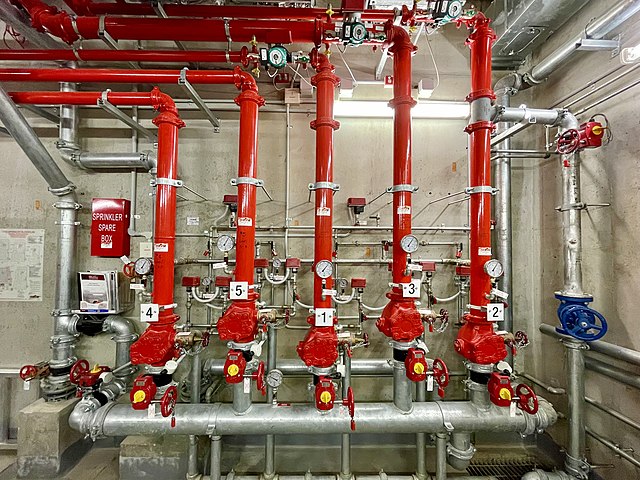
Remote Monitoring
Remote monitoring capabilities enable facility managers to oversee the status of fire sprinkler systems from off-site locations. Benefits include:
- Continuous monitoring and quick response to issues.
- Reduced need for on-site personnel.
- Enhanced maintenance and troubleshooting capabilities.
Eco-Friendly Solutions
Water Recycling
Innovative fire sprinkler systems now incorporate water recycling features, reducing water waste. These systems offer:
- Conservation of water resources.
- Reduced environmental impact.
- Cost savings on water usage.
Low-Flow Sprinklers
Low-flow sprinkler heads are designed to minimize water consumption while effectively controlling fires. Advantages include:
- Efficient use of water resources.
- Reduced water damage to property.
- Enhanced sustainability of fire protection systems.
Fire Sprinkler Design Techniques for Modern Buildings: Conclusion
The integration of innovative fire sprinkler design techniques in modern buildings is revolutionizing fire safety. From advanced detection systems and enhanced suppression technologies to eco-friendly solutions and seamless integration with building management systems, these advancements are setting new standards in fire protection.
F2M Fire & Drafting Designs Inc.
At F2M Fire & Drafting Designs Inc., we are at the forefront of these innovations, providing cutting-edge fire sprinkler system designs tailored to your building’s unique needs.
Contact us today to learn how our advanced solutions can elevate your fire safety measures.
F2M Fire & Drafting Designs Inc.
718-928-3009
Email: info@f2mfadds.com
Let us help you protect your property and occupants with the latest in fire sprinkler technology.
How to Choose the Right Fire Suppression System for Your Industry
How do you go about choosing the right fire suppression system for your industry type? Fire suppression systems are crucial in protecting property, equipment, and lives from the devastating effects of fire. However, choosing the right system for your industry can be a complex decision. Here we will guide you through important considerations and options to ensure you select the most effective fire suppression system for your industry.
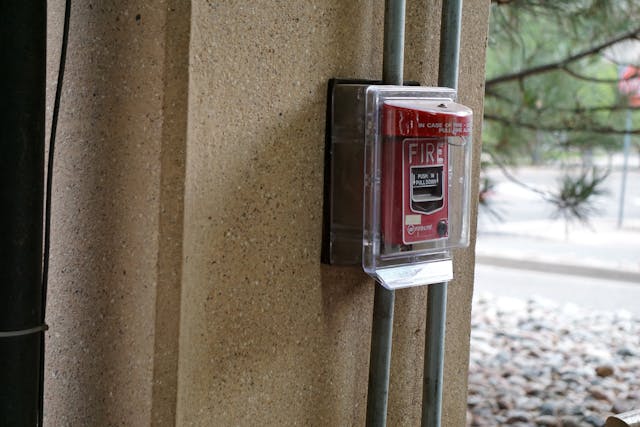
Fire Suppression System for Your Industry: How to Choose the Right One?
Assessing Fire Risks
Identify Potential Hazards
Understanding the specific fire risks associated with your industry is the first step in selecting the right fire suppression system. Consider the following:
- Types of materials and substances present (flammable liquids, electrical equipment, etc.).
- Processes and operations that could potentially ignite a fire.
- Historical data on fire incidents in similar settings.
Evaluate Fire Load
Fire load refers to the amount of combustible material present in the environment. High fire loads require robust suppression systems capable of handling large fires.
Types of Fire Suppression Systems
Water-Based Systems
Water-based fire suppression systems are the most common and include:
- Sprinkler Systems: These systems are suitable for a wide range of applications, including offices, warehouses, and residential buildings.
- Deluge Systems: Ideal for high-hazard areas such as chemical plants and power stations, where rapid fire suppression is critical.
Foam Systems
Foam suppression systems are effective in controlling fires involving flammable liquids. They work by forming a blanket over the fuel, preventing oxygen from reaching the fire.
- Applications: Aircraft hangars, fuel storage facilities, and industrial plants.
Gas-Based Systems
Gas-based fire suppression systems use inert or chemical gases to extinguish fires without causing damage to sensitive equipment.
- Inert Gas Systems: Use gases like nitrogen and argon. Suitable for data centers, server rooms, and telecommunication facilities.
- Chemical Gas Systems: Use agents like FM-200 or Novec 1230. Ideal for protecting valuable electronics and archival storage.

Specialized Systems
Certain industries may require specialized fire suppression systems tailored to specific risks.
- Kitchen Fire Suppression Systems: Designed to handle grease fires in commercial kitchens.
- Vehicle Fire Suppression Systems: Protect heavy machinery and vehicles in mining, forestry, and transportation sectors.
Compliance and Regulations
Industry Standards
Ensure that the fire suppression system you choose complies with industry-specific standards and regulations. Familiarize yourself with codes from organizations such as:
- National Fire Protection Association (NFPA).
- Occupational Safety and Health Administration (OSHA).
- Local fire safety authorities.
Insurance Requirements
Check with your insurance provider to understand any specific requirements they may have regarding fire suppression systems.
Installation and Maintenance
Professional Installation
Proper installation is critical to the effectiveness of your fire suppression system. Ensure that the system is installed by certified professionals who understand the unique needs of your industry.
Regular Maintenance
Routine maintenance and inspections are essential to keep your fire suppression system in optimal condition. Schedule regular checks and servicing to ensure the system functions correctly when needed.
Cost Considerations
Initial Investment
Consider the initial cost of purchasing and installing the fire suppression system. While some systems may have higher upfront costs, they may offer better protection and lower long-term expenses.
Long-Term Costs
Evaluate the long-term costs associated with maintenance, inspections, and potential system upgrades. Investing in a reliable system upfront can save money in the long run by preventing fire-related damages and downtime.
Choosing the Right Fire Suppression System for Your Industry: Conclusion
Choosing the right fire suppression system for your industry is a critical decision that requires careful consideration of fire risks, regulatory requirements, and cost factors. By understanding the unique needs of your industry and working with experienced professionals in fire suppression system design and installation, you can ensure that your fire suppression system provides optimal protection.
Call Fernandez at F2M Inc. for Fire Sprinkler System Design
At F2M Fire & Drafting Designs Inc., we specialize in designing fire suppression systems for a wide range of industries. Contact us today to discuss your specific fire protection needs and find the best solution for your business.
F2M Fire & Drafting Designs Inc.
Fernandez McKenly
31 South Street, Suite 3S-4
Mount Vernon, NY 10550
(718) 928-3009
info@f2mfadds.com
Protect your industry with the right fire suppression system—let us guide you through the process.
Choosing the Right Fire Sprinkler System Design for Your Business
Choosing the right fire sprinkler system design for your business is a crucial decision. Your choice can impact the safety of your employees, the protection of your assets, and your overall peace of mind. In this blog post, we’ll guide you through the considerations involved in choosing the right fire sprinkler system design to safeguard your business.
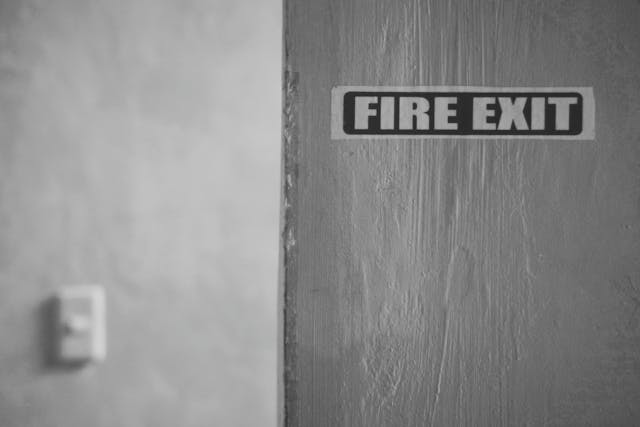
Choosing the Right Fire Sprinkler System Design
Understand Your Business Needs
Assessing Fire Risks:
Start by identifying the specific fire risks associated with your business. Consider factors such as the type of industry, materials used, occupancy load, and the layout of your facility.
Compliance with Regulations:
Ensure that your chosen design complies with local fire safety codes and regulations. Non-compliance can result in fines and legal consequences.
Types of Fire Sprinkler Systems
Wet Pipe Systems:
Commonly used in office buildings and retail spaces, wet pipe systems have water-filled pipes connected to sprinkler heads. They are quick to respond but may not be suitable for environments where freezing temperatures are a concern.
Dry Pipe Systems:
Ideal for spaces prone to freezing, dry pipe systems contain pressurized air or nitrogen in the pipes, which prevents water from entering until a sprinkler head activates.
Deluge Systems:
These systems release water from all sprinkler heads simultaneously, typically found in high-hazard areas where rapid fire control is crucial.
Pre-Action Systems:
Pre-action systems require two triggers to activate: a fire detection device and a sprinkler head opening. They are suitable for environments where false alarms could be costly.
Customized Design
Tailored to Your Business:
Work with a professional fire sprinkler system design company, like F2M Fire & Drafting Designs Inc., to create a custom solution that meets your unique business needs.
Flow and Pressure Calculations:
Professional designers will perform hydraulic calculations to ensure the system provides adequate water flow and pressure for effective fire control.
Choosing the Right Fire Sprinkler System Design: Call a Professional
Selecting a fire sprinkler system design is a critical step in safeguarding your business. At F2M Fire & Drafting Designs Inc., we specialize in tailoring fire protection solutions to match your business’s specific requirements. Contact us today to schedule a consultation and ensure your business is equipped with the ideal fire sprinkler system.
Contact us:
F2M Fire & Drafting Designs Inc.
31 South Street, Suite 3S-4
Mount Vernon, NY 10550
✆ (718) 928-3009
Email: info@f2mfadds.com
Commercial vs. Residential Fire Sprinkler System Design: Key Differences
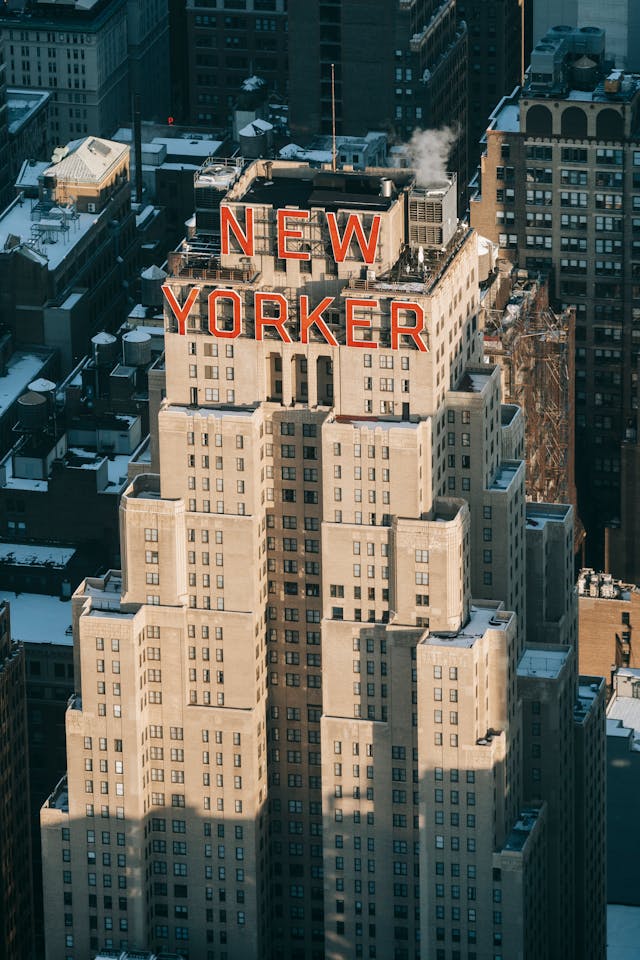 What are the main differences in commercial vs. residential fire sprinkler system design? Fire sprinkler systems are indispensable for both commercial and residential properties, but their designs differ significantly due to varying purposes and requirements. In this blog post, we’ll explore the key distinctions between commercial and residential fire sprinkler system designs and why tailoring these systems is essential.
What are the main differences in commercial vs. residential fire sprinkler system design? Fire sprinkler systems are indispensable for both commercial and residential properties, but their designs differ significantly due to varying purposes and requirements. In this blog post, we’ll explore the key distinctions between commercial and residential fire sprinkler system designs and why tailoring these systems is essential.
Commercial vs. Residential Fire Sprinkler System Design
Purpose and Occupancy
Commercial:
Commercial properties often host diverse activities, such as offices, retail spaces, and manufacturing units. Fire sprinkler systems in these settings must account for a variety of fire risks, varying occupancy loads, and the need to protect valuable assets.
Residential:
Residential fire sprinkler systems primarily focus on protecting the occupants and their belongings. They’re designed to respond quickly to household fires, ensuring safe evacuation and minimal property damage.
Water Supply
Commercial:
Commercial buildings usually have dedicated fire pumps and substantial water reserves to meet the demands of their larger, complex systems. This ensures sufficient water flow for multiple sprinkler heads simultaneously.
Residential:
Residential systems typically rely on the building’s standard water supply. They’re designed to use less water compared to commercial systems, as the goal is containment rather than full-scale fire suppression.
Complexity of Design
Commercial:
Commercial fire sprinkler systems tend to be more intricate due to the complexity of the building layout, numerous occupancy types, and specific fire hazards. Customized designs are essential for effective protection.
Residential:
Residential systems are generally simpler in design, with a focus on quick response and ease of maintenance. Standardized designs are more common in this context.
Codes and Regulations
Commercial:
Commercial properties must adhere to stringent fire codes and regulations, often requiring consultation with fire protection engineers to ensure compliance.
Residential:
Residential systems follow local building codes but generally have less stringent requirements compared to commercial installations.
Evacuation Considerations
Commercial:
Commercial buildings often require more extensive fire alarm and evacuation systems to manage large numbers of occupants. Sprinkler systems play a role in aiding safe evacuation.
Residential:
In residential settings, fire sprinkler systems complement existing smoke detectors and are primarily designed to contain fires, allowing residents to evacuate without delay.
Commercial vs. Residential Fire Sprinkler System Design: Consult an Expert
Whether you need a commercial or residential fire sprinkler system, F2M Fire & Drafting Designs Inc. has the expertise to create a tailored solution. Protect your property and loved ones—contact us today for a personalized fire protection plan.
Contact us:
F2M Fire & Drafting Designs Inc.
31 South Street, Suite 3S-4
Mount Vernon, NY 10550
✆ (718) 928-3009
Fire Sprinkler Systems: A Crucial Element of Building Safety
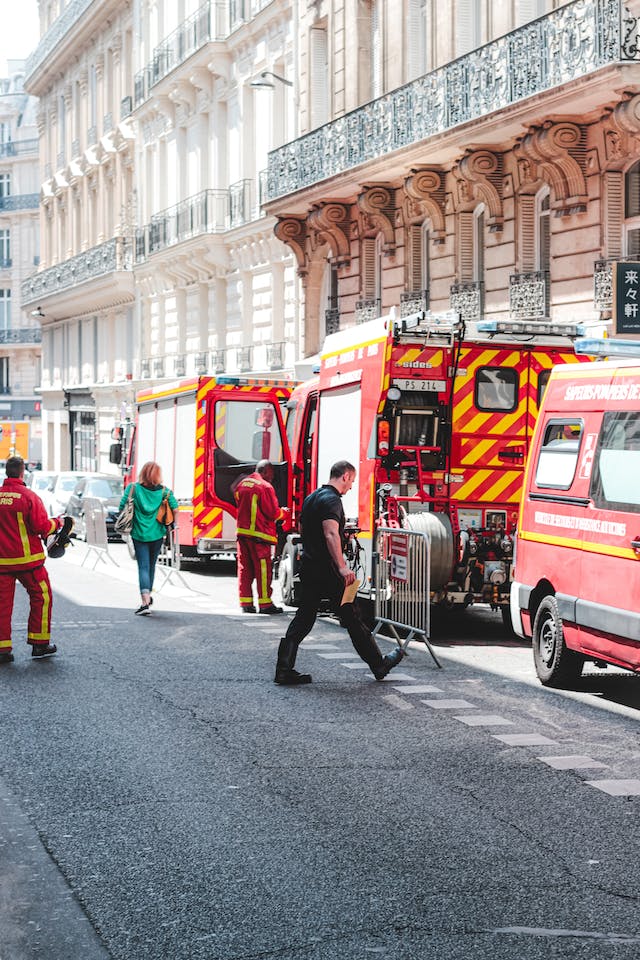 In the realm of building safety, few elements are as crucial as well-designed fire sprinkler systems. These systems stand as silent guardians, ready to respond when the unthinkable happens – a fire outbreak. In this blog post, we explore the significance of fire sprinkler systems and their integral role in safeguarding lives and property.
In the realm of building safety, few elements are as crucial as well-designed fire sprinkler systems. These systems stand as silent guardians, ready to respond when the unthinkable happens – a fire outbreak. In this blog post, we explore the significance of fire sprinkler systems and their integral role in safeguarding lives and property.
The Fire Threat
Fires are unpredictable and can escalate rapidly. Without effective fire suppression measures, the consequences can be devastating. Fire sprinkler systems are engineered to address this threat efficiently and swiftly.
How Fire Sprinkler Systems Work
Fire sprinkler systems operate on a simple yet effective principle: when a fire is detected, a sprinkler head in the vicinity activates, releasing water to control or extinguish the flames. This immediate response is vital, as it limits the fire’s growth and buys precious time for evacuation.
Comprehensive Fire Protection
One of the key advantages of fire sprinkler systems is their ability to provide comprehensive protection. These systems can be tailored to various settings, including residential, commercial, and industrial spaces. They adapt to the unique requirements of each environment, ensuring optimal safety.
Complying with Regulations
Building codes and regulations mandate the installation of fire sprinkler systems in many structures. Compliance with these standards is not only a legal requirement but also a responsible choice. Failing to meet these requirements can have severe consequences in terms of safety and potential legal liabilities.
Preventing Property Damage
Beyond saving lives, fire sprinkler systems play a crucial role in preventing extensive property damage. Swift suppression of fires reduces the destruction caused by flames, smoke, and heat, minimizing repair and reconstruction costs.
The Importance of Maintenance
To ensure the reliability of fire sprinkler systems, regular maintenance is essential. Routine inspections, testing, and upkeep activities are vital in keeping these systems in optimal working condition.
Building Safety: Choose F2M Fire & Drafting Designs Inc. for Your Fire Sprinkler System Design
At F2M Fire & Drafting Designs Inc., we understand the paramount importance of fire sprinkler systems in building safety. Our expertise lies in designing and implementing these systems to perfection, tailored to your specific needs.
F2M Fire & Drafting Designs Inc.
31 South Street, Suite 3S-4
Mount Vernon, NY 10550
✆ (718) 928-3009
Let us be your partner in ensuring the safety of your building and the well-being of its occupants.
The Science Behind the Best Fire Sprinkler System Design
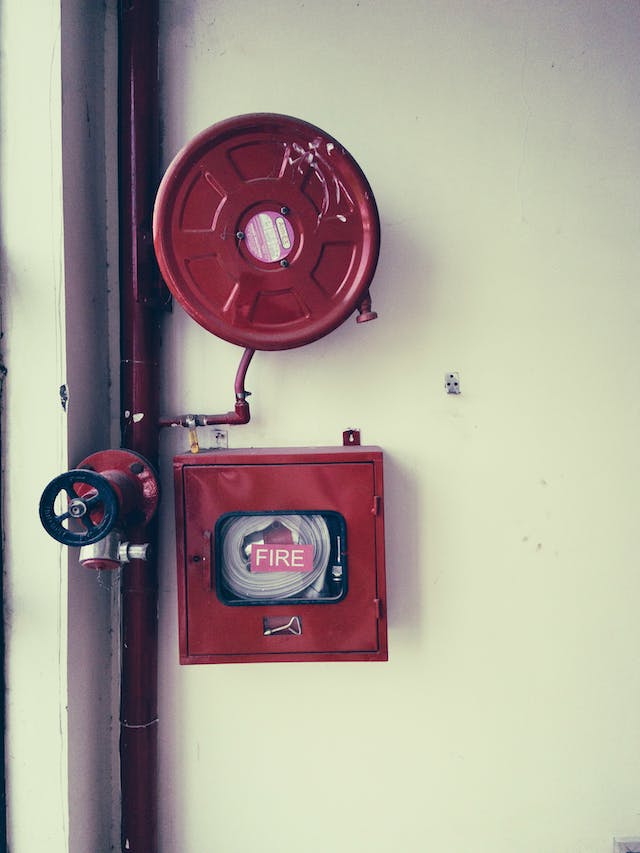 In this blog post, we will delve into the intricate science behind the creation of the best fire sprinkler system design. When it comes to fire safety, having a properly designed and installed fire sprinkler system is essential. Fire sprinkler systems can help control and even extinguish fires, saving lives and preventing property damage. However, designing a fire sprnkler system is a complex process that requires specialized knowledge ad expertise.
In this blog post, we will delve into the intricate science behind the creation of the best fire sprinkler system design. When it comes to fire safety, having a properly designed and installed fire sprinkler system is essential. Fire sprinkler systems can help control and even extinguish fires, saving lives and preventing property damage. However, designing a fire sprnkler system is a complex process that requires specialized knowledge ad expertise.
The Best Fire Sprinkler System Design: Important Factors
Understand Fire Dynamics
To design an effective fire sprinkler system, it’s crucial to comprehend the science of fire itself. Fires are chemical reactions involving three key components: heat, fuel, and oxygen. Fire sprinklers work by disrupting this triangle of combustion. The heat from the fire activates the sprinkler, releasing water to cool the surrounding area and remove heat. This interrupts the fire’s ability to sustain itself.
Hydraulic Calculations
Hydraulic calculations form the backbone of fire sprinkler system design. These calculations determine the flow rate and pressure required to control or extinguish a fire in a given area. Factors like pipe size, water supply, and hazard classification are meticulously considered to ensure the system’s effectiveness. Engineers use specialized software and mathematical equations to perform these calculations accurately.
Sprinkler Head Selection
Selecting the right type of sprinkler head is a critical aspect of fire sprinkler system design. Various sprinkler heads are designed for specific applications, such as high-temperature environments or areas with low ceilings. The choice of sprinkler head must align with the anticipated fire hazards and the unique characteristics of the building.
Spacing and Layout
The layout and spacing of sprinkler heads are determined by factors like the type of occupancy, ceiling height, and obstructions within the space. Engineers strive to create a design that ensures uniform water distribution, maximizing the system’s effectiveness in controlling fires.
Standpipe Systems
In many buildings, standpipe systems are incorporated alongside fire sprinklers to provide firefighters with a readily available water supply. The science behind standpipe systems involves designing a network of pipes and outlets that can deliver water to multiple floors and locations swiftly.
Material Selection and Corrosion Control
The materials used in the construction of fire sprinkler systems must be carefully selected to withstand the corrosive nature of water over time. Corrosion can compromise the system’s functionality, emphasizing the importance of selecting corrosion-resistant materials and implementing effective corrosion control measures.
Compliance with Codes and Regulations
The science of fire sprinkler system design also involves an in-depth knowledge of local building codes and regulations. Designers must ensure that their systems meet or exceed these requirements to guarantee the safety of building occupants and compliance with the law.
Regular Maintenance and Testing
The science doesn’t stop after installation. Ongoing maintenance and testing are essential to ensure that the system remains fully operational. Regular inspections, testing, and maintenance activities are all based on scientific principles and industry best practices.
The Science Behind the Best Fire Sprinkler System Design: Conclusion
Effective fire sprinkler system design is a meticulous and scientifically driven process. Engineers and designers rely on their understanding of fire dynamics, hydraulic calculations, material science, and compliance with regulations to create systems that safeguard lives and property. As technology advances, so does the science behind fire sprinkler systems, leading to more efficient and reliable designs that continue to save lives and protect buildings from the devastating effects of fire.
Contact us today
F2M Fire & Drafting Designs Inc.
31 South Street, Suite 3S-4
Mount Vernon, NY 10550
✆ (718) 928-3009
Email: info@f2mfadds.com
Why F2M Fire and Drafting Designs is the Go-To Choice for Retail Fire System Design
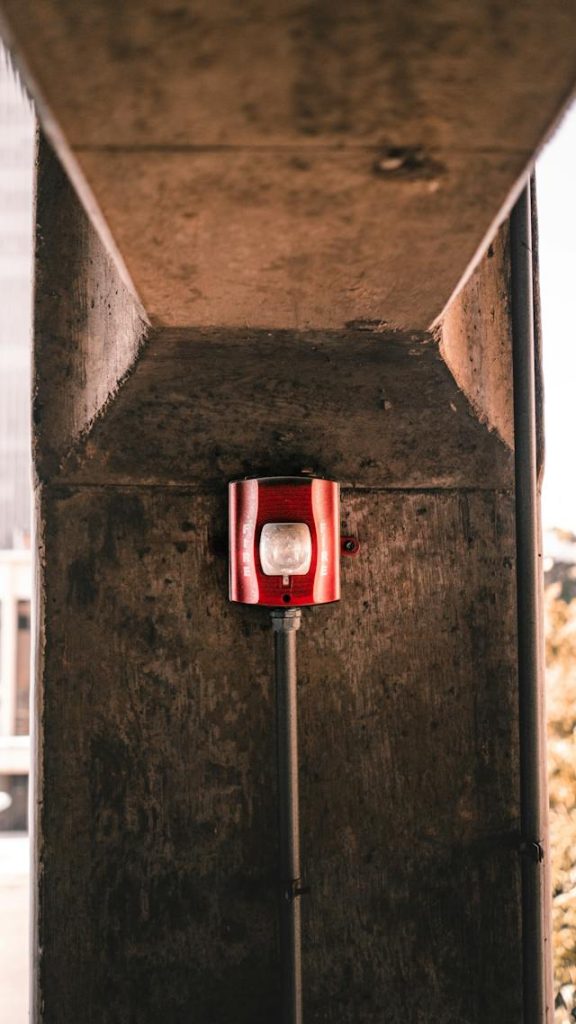 When it comes to protecting your retail business from fires, a reliable and effective fire protection system design is crucial. At F2M Fire and Drafting Designs Inc, we specialize in designing custom fire protection systems for retail properties. Here are some reasons why we are the go-to choice for retail fire system design:
When it comes to protecting your retail business from fires, a reliable and effective fire protection system design is crucial. At F2M Fire and Drafting Designs Inc, we specialize in designing custom fire protection systems for retail properties. Here are some reasons why we are the go-to choice for retail fire system design:
Retail Fire System Design Experts
Experience and Expertise
Our designers and engineers have years of experience in the industry and a deep understanding of retail fire protection needs. We stay up to date with the latest technologies and regulations to ensure that your fire protection system is up to code and functioning properly.
Customized Design Solutions
At F2M Fire and Drafting Designs, we understand that every retail property has unique fire protection needs. That’s why we offer customized design solutions tailored to the specific needs of your retail property. We take into account factors such as the size and layout of your property, the types of materials being used in your property, and the potential sources of ignition when designing your fire protection system.
Comprehensive Services
We offer a wide range of services to meet all of your retail fire protection needs. Our services include fire sprinkler system design and installation, hydraulic calculations, standpipe layout design, fire pump and valve room design, cost estimating and quantities takeoff, and fire sprinkler seismic design, calculation, and analysis. We can design and install a comprehensive fire protection system for your retail property from start to finish.
Exceptional Customer Service
At F2M Fire and Drafting Designs, we are committed to providing exceptional customer service. We work closely with our clients throughout the entire design and installation process to ensure that their needs are met and their questions are answered. We also offer ongoing support and maintenance to ensure that your fire protection system continues to function properly.
Contact F2M Fire and Drafting Designs for Your Retail Fire Protection Needs
If you’re in need of a custom fire protection system for your retail property, contact F2M Fire and Drafting Designs. Our team of experts has the experience and knowledge to design and install a system that meets your specific needs. We stay up to date with the latest technologies and regulations to ensure that your fire protection system is up to code and functioning properly.
Contact us today to learn more about our fire protection system design services.
F2M Fire & Drafting Designs Inc.
31 South Street, Suite 3S-4
Mount Vernon, NY 10550
✆ (718) 928-3009
Email: info@f2mfadds.com
Exploring the Latest Trends in Commercial Fire Protection Design
In this blog post, we will explore some of the latest trends in commercial fire protection design. As technology continues to advance, so does the technology in fire protection systems. It’s important to stay up to date with the latest trends to ensure that your property is protected against fire damage and that occupants are safe in the event of a fire.
Trends in Commercial Fire Protection Design
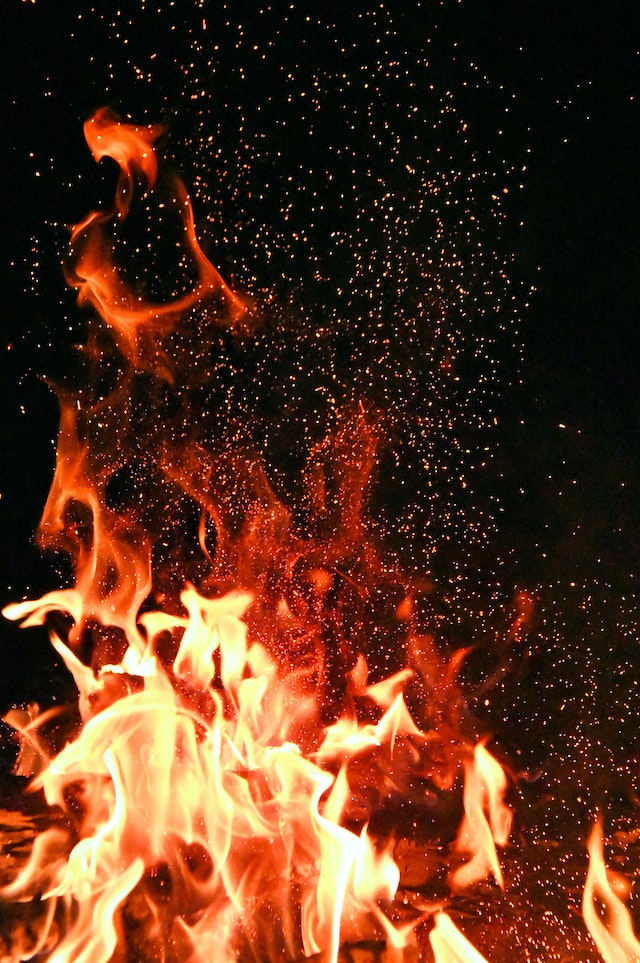
Addressable Fire Alarm Systems
One of the latest trends in commercial fire protection design is the use of addressable fire alarm systems. These systems can quickly identify the exact location of a fire within a building, making it easier for occupants to evacuate safely and for firefighters to locate and extinguish the fire. Addressable fire alarm systems can also provide detailed information about the fire, such as its size and temperature, allowing firefighters to respond more effectively.
Early Warning Fire Detection
Another trend in commercial fire protection design is the use of early warning fire detection systems. These systems use advanced technology to detect smoke or heat before a fire has even started, allowing for a faster response and potentially preventing a fire from starting altogether. Early warning fire detection systems can be particularly useful in areas where fires are more likely to occur, such as kitchens and industrial spaces.
Smart Fire Suppression Systems
Smart fire suppression systems are also becoming increasingly popular in commercial fire protection design. These systems use advanced sensors and algorithms to detect and respond to fires quickly and efficiently. Smart fire suppression systems can also be integrated with other building systems, such as HVAC and security systems, to provide a comprehensive approach to building safety.
Cost-Effective Solutions
While the latest commercial fire protection systems are exciting, it’s also important to consider cost-effective solutions for your building. At F2M Fire and Drafting Designs, we work with you to identify the best fire protection solutions for your budget while still ensuring that your building and occupants are protected against fire damage.
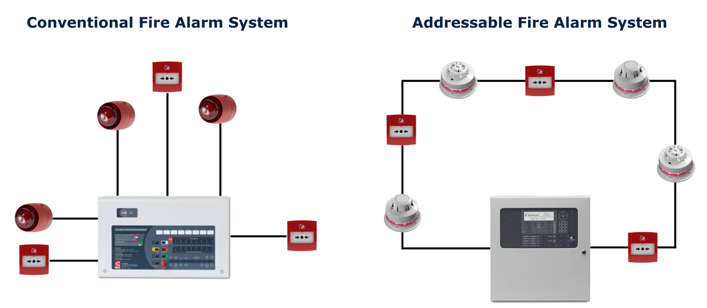
Trends in Commercial Fire Protection Design: Contact F2M Fire and Drafting Designs
If you’re interested in exploring the latest trends in commercial fire protection design, contact F2M Fire and Drafting Designs Inc. Our team of experienced professionals can work with you to identify the best fire protection solutions for your building, whether that includes addressable fire alarm systems, early warning fire detection, smart fire suppression systems, or other cutting-edge technologies.
Contact us today to learn more about our fire protection system design services.
F2M Fire & Drafting Designs Inc.
31 South Street, Suite 3S-4
Mount Vernon, NY 10550
✆ (718) 928-3009
Email: info@f2mfadds.com
Fire Sprinkler System Designs: Why You Need Professional Help
When it comes to fire safety, having a properly designed and installed fire sprinkler system is essential. Fire sprinkler systems can help control and even extinguish fires, saving lives and preventing property damage. However, designing a fire sprinkler system is a complex process that requires specialized knowledge and expertise. In this blog post, we will discuss why you need professional help for fire sprinkler system design, and how F2M Fire & Drafting Designs Inc. can help.
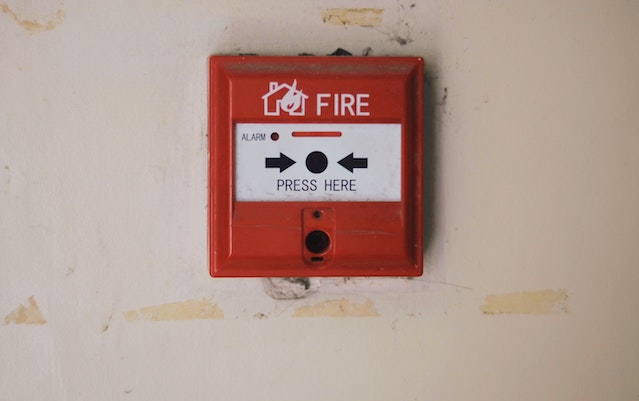
Why You Need Professional Help for Fire Sprinkler System Designs
Fire sprinkler system design involves much more than just installing a few sprinkler heads. It requires a detailed understanding of building codes and regulations, hydraulic calculations, and the unique needs of each property. Without this expertise, a poorly designed fire sprinkler system may not provide adequate protection in the event of a fire.
Working with a professional fire sprinkler system design company like F2M Fire & Drafting Designs Inc. can ensure that your fire sprinkler system is designed to meet all codes and regulations. The system will be tailored to the specific needs of your property. Our team of experienced designers can work with you to create a comprehensive fire sprinkler system layout that provides optimal protection for your property and its occupants.
Typical Fire Sprinkler System Design Services
Any professional fire system designer will offer a range of services to help ensure that your fire sprinkler system is designed to meet all necessary codes and regulations. Typical services include:
Fire Sprinkler System Design and Layout
Our team of experienced designers can create a comprehensive fire sprinkler system layout for your commercial, industrial, or retail property. We use the latest technology and software to ensure that our designs are accurate and optimized for your property’s unique needs.
Hydraulic Calculations
We can perform hydraulic calculations to ensure that your fire sprinkler system provides adequate water flow to control or extinguish fires.
Standpipe Layout Design
We can design standpipe systems to provide firefighters with quick and easy access to water in the event of a fire.
Fire Pump and Valve Room Design
We can design fire pump and valve rooms to ensure that your fire sprinkler system is properly maintained and easily accessible in the event of an emergency.
Cost Estimating and Quantities Takeoff
We can provide accurate cost estimating and quantities takeoff services to help you plan and budget for your fire sprinkler system installation.
Fire Sprinkler Seismic Design, Calculation, and Analysis
We can perform seismic design, calculation, and analysis services to ensure that your fire sprinkler system is able to withstand seismic activity and remain operational in the event of an earthquake.

Contact F2M Fire & Drafting Designs Inc.
If you are in need of professional fire sprinkler system design services, contact F2M Fire & Drafting Designs Inc. today. Our team of experienced designers can work with you to create a comprehensive fire sprinkler system design that meets all necessary codes and regulations and provides optimal protection for your property and its occupants.
F2M Fire & Drafting Designs Inc.
31 South Street, Suite 3S-4
Mount Vernon, NY 10550
✆ (718) 928-3009
Email: info@f2mfadds.com
Qualities of the Best Fire Protection System Designers
What are some qualities to look for in the best fire protection system designers? According to information that the National Fire Protection Association found, the fire department responded to an emergency on average once every 23 seconds.
Fire hazards can always be very severe and can start spreading throughout a business relatively quickly. And one of the best ways that businesses can prepare for a possible fire hazard is by enlisting the services of a fire protection system designer.

Source: Pexels
Their responsibilities often boil down to designing and installing a fire sprinkler or suppression system that can minimize damage to your business. Furthermore, the systems that they install will also allow them to save the lives of your employees or customers. Therefore, you must find the best fire protection designer for your business.
But if this is your first time making this decision, you might need to figure out what to look for in a fire protection designer. So, here is a list of everything you need to look out for when choosing a fire protection system designer.
Qualities of Great Fire Protection System Designers
A fire protection system designer has to ensure that the system they put together can save lives and effectively suppress dangerous fires. To perform their duties effectively, they need to have the following skills.
Excellent Communication Skills
One of the most important assets that any good fire protection system designer has is excellent communication skills. Designers will always work with a team of builders to install the necessary parts for the system. So even though they can usually work alone during the initial inspection, they need to be able to communicate their goals effectively to their team.
Their communication skills also extend to their clients, as they need to understand their demands better to make a good fire protection system. They should also have the skills to water down their explanations about the systems to clients who likely understand nothing about fire protection systems.
Excellent Understanding of Industry Codes and Legal Standards
A designer must keep various building codes and regulations in mind when creating a fire protection system. Not only do they want to avoid any possible legal trouble, but following these codes is a sign of a good designer.
Excellent Observational Skills
Once the designer implements the plans they have prepared, they need to be careful that everything is going according to plan. They need to keep a keen eye on their team and see if any faults or vulnerabilities could prove problematic later.
Whether it is a crack in the pipes they are using or a loose bolt, they need to be able to find that small problem. Another important thing to consider is that they should also notice any issues with their plans and if there are any inconsistencies that they should address.
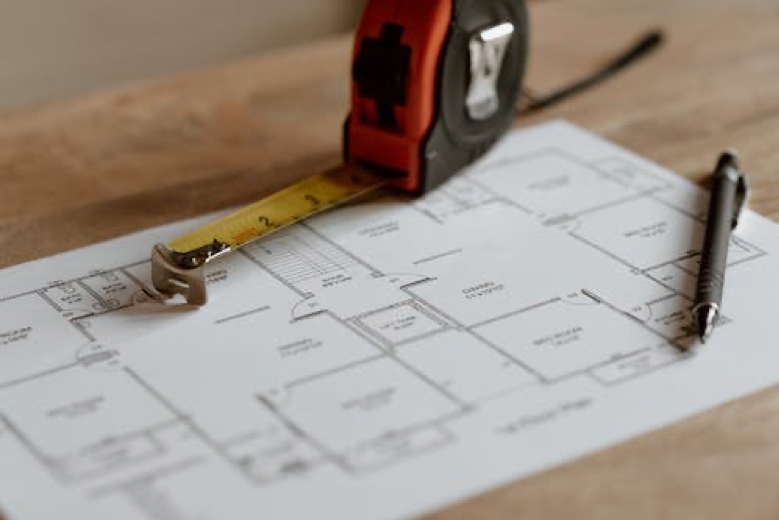
Source: Pexels
Should Solve Problems Effectively
As we mentioned earlier, there are small hiccups that can come with implementing a plan for a fire protection system. Therefore, a designer needs to be excellent at solving problems to address these small issues on the fly. Furthermore, there can also be structural challenges with the building that they need to work around to make the system.
Qualities of the Best Fire Protection System Designers: Conclusion
A good designer is essential to ensuring your firm’s safety in the long run. And when working with designers who have these qualities, you can ensure that your fire protection system will be good.
If you’re looking for a firm to help install the necessary fire protection systems, allow our experts at F2M Fire & Drafting Designs Inc. to help. With over 20 years of experience in the field, we offer code compliant and accurate sprinkler designs.
F2M Fire & Drafting Designs Inc.
31 South Street, Suite 3S-4
Mount Vernon, NY 10550
(718) 928-3009
info@f2mfadds.com
https://www.f2mfadds.com/contact
Professional Fire Sprinkler System Design
Professional fire sprinkler system design is vital for any property that is at risk for fire as they help protect them. Since fire related accidents are rare, your system will mostly remain inactive. However, you must still install it to mitigate fire risk, ensuring you can extinguish it quickly. While you will come across a wide range of fire sprinkler systems, only some options may suit you because each system is made with a particular area in mind.
So, before installing a professional fire sprinkler system, ensure you are familiar with its design and whether it suits your location. As the names suggest, wet pipe sprinkler systems contain water, and dry systems have water and air. The water in dry sprinkler systems is held back with the help of a valve.
Sprinkler systems with wet pipes are usually the go to option for most business and residential settings. Meanwhile, sprinkler systems with dry pipes are suitable for places where water based piping would not be practical. Depending on your particular building’s characteristics, installing a sprinkler system could be mandatory. Now, let us talk about the designs of different fire sprinkler systems.
A Look at Fire Sprinkler System Designs
It must be clear that wet and dry fire sprinkler systems have vastly different designs and features. Let us discuss them to see what makes them unique:
Wet Fire Sprinkler Systems
Sprinkler systems with wet pipes contain pressurized water. The primary purpose of adding this water to the pipe is to ensure that the system can extinguish the fire immediately. Once the sprinkler system’s head opens after responding to heat, it releases water at a high pressure to put off the fire.
Because of this, wet pipe systems respond more rapidly than other sprinkler systems. It is also worth keeping in mind that the response time is independent of the water supply and the sprinkler head.
Wet pipe systems do not cost much, and their response time is quite fast, making them the go to option for most properties. Additionally, these systems do not require much maintenance either. The only downside of this system’s design is that since its pipes store water, they can freeze during the winter and possibly crack or break.
Plus, there are certain situations where properties contain flammable substances, and the system may need to release water immediately. It may not be possible if the property uses a wet pipe system, as every sprinkler head releases water individually after spotting heat. So, activating the heads all at once is not possible.
Fire Sprinkler Systems with Dry Pipes
Dry pipe fire sprinkler systems are quite similar to wet pipe systems in that their sprinkler heads become active in response to heat. The main difference between the two is that dry pipes contain nitrogen or compressed air rather than water. They also contain a valve, which controls the water entrance. Once a sprinkler head becomes active, it releases the air, opening the valve because of the pressure and letting water enter the system.
While dry pipe fire systems are quite effective and serve their purpose efficiently, their response time is slower than wet pipe sprinkler systems.
Professional Fire Sprinkler System Design: Final Thoughts
Do you want to safeguard your property from potential fire accidents? If so, you will need experts familiar with fire sprinkler system designs. That is where F2M Fire & Drafting Designs Inc. can help you. Contact us to explain your fire safety needs, and one of our experts will be right there to provide you with a swift and effective solution.
F2M Fire & Drafting Designs Inc.
31 South Street, Suite 3S-4
Mount Vernon, NY 10550
(718) 928-3009
info@f2mfadds.com
https://www.f2mfadds.com/contact
Differences Between Fire Sprinkler System Designers and Installers
 What are some differences between fire sprinkler system designers and installers? Fire sprinkler systems are a simple yet vital component of any commercial or domestic building’s fire protection system. In most cases, installers attach this system to side walls or ceilings. These systems have a water supply, sprinkler heads, and a piping system to distribute water. Sprinklers discharge water automatically whenever they detect a fire.
What are some differences between fire sprinkler system designers and installers? Fire sprinkler systems are a simple yet vital component of any commercial or domestic building’s fire protection system. In most cases, installers attach this system to side walls or ceilings. These systems have a water supply, sprinkler heads, and a piping system to distribute water. Sprinklers discharge water automatically whenever they detect a fire.
Contrary to popular belief, however, they do not have any smoke triggers. Since these systems extinguish or control fires, they are fire suppression and detection systems. Hiram Stevens Maxim was the pioneer behind sprinkler systems and founded them during the latter part of the 19th century. Now, countries across the globe use these systems with commercial and residential buildings utilizing their ability to extinguish the fire.
What is a Fire Sprinkler System Designer
People often mix up fire sprinkler installers and designers. The two are vastly different and have varying responsibilities. Let us start by talking about the designers. Fire sprinkler designers are in charge of developing and designing sprinkler systems for aiding or preventing fire.
Fire sprinkler system designers’ main responsibilities include performing in depth analysis and research, gaining feedback from experts and customers and working on it, producing samples or prototypes, and collaborating with technicians and engineers.
Furthermore, fire sprinkler system designers sometimes work on design enhancements and upgrades, establish testing structures, repair and install systems, conduct maintenance checks, etc., to ensure the systems remain efficient.
Main Responsibilities of Fire Sprinkler System Designers
Mentioned below is a list of the main responsibilities of fire sprinkler system designers and the tasks their roles typically require to perform.
- Instructing and coordinating public CPR educational sessions.
- Collaborating with skilled professionals like HVAC and mechanical installers, electricians, etc.
- Following every OSHA law and standard.
- Submitting design ideas to the AHJ for approval.
- Conducting in depth field surveys.
- Designing site water supplies, as built drawings, and plumbing drawings, and testing them.
- Reading and interpreting structural and architectural MEP drawings.
What is a Fire Sprinkler System Installer?
Fire sprinkler installers play a massive role in ensuring homes and buildings remain safe. These professionals are responsible for implementing a wide range of sprinkler systems, which include pre action, deluge, wet, dry and automatic sprinkler systems. Installers must understand blueprints and diagrams and know how to construct valves and protection piping.
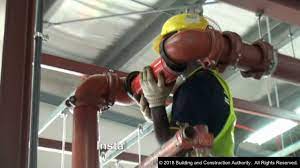 Additionally, installers must meet certain safety regulations to ensure the system works efficiently and doesn’t harm anyone. An installer’s work often requires them to use power and hand tools. Their job requires them to use lift equipment and climb ladders for work in high places. Common skills of almost every fire sprinkler system installer include troubleshooting, mechanical, and communication skills.
Additionally, installers must meet certain safety regulations to ensure the system works efficiently and doesn’t harm anyone. An installer’s work often requires them to use power and hand tools. Their job requires them to use lift equipment and climb ladders for work in high places. Common skills of almost every fire sprinkler system installer include troubleshooting, mechanical, and communication skills.
What Makes Installers and Designers Different?
As their respective names suggest, fire sprinkler installers are responsible for connecting or attaching the system to a commercial or public building. On the other hand, designers focus on creating well thought out sprinkler designs to ensure they are safe and work efficiently.
Differences between Fire Sprinkler System Designers and Installers: Final Thoughts
Almost every area requires a different fire sprinkler system design, and the last thing you need to do is use one that wasn’t made for your building. For this reason, it is vital to collaborate with an experienced fire sprinkler designer. Doing so will help you get a sprinkler system specifically made for your place. Contact F2M Fire & Drafting Designs Inc. to get your sprinkler design solution.
Once you contact us, we will discuss your project and needs. We will design a professional code compliant fire sprinkler system design suited for your particular particular project.
F2M Fire & Drafting Designs Inc.
31 South Street, Suite 3S-4
Mount Vernon, NY 10550
(718) 928-3009
info@f2mfadds.com
https://www.f2mfadds.com/contact
Who is Qualified to Design Fire Suppression Systems?
Who is qualified to design fire suppression systems? In the pursuit of equipping your new or even an old building with state-of-the-art fire suppression systems, make sure you don’t make the common mistakes. One of the most popular mishaps that occur in installing fire suppression systems is hiring unqualified and highly unprofessional individuals for the job. Why does that matter? First off, such individuals won’t have enough knowledge about the local building and fire protection codes and standards.
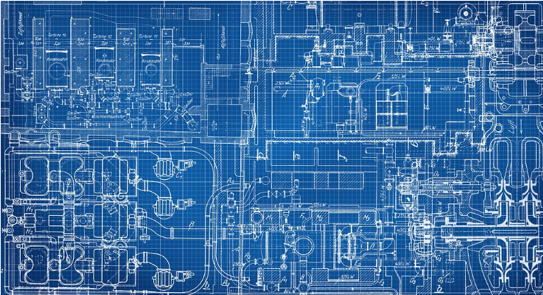
(Source)
Secondly, unprofessional or unqualified designers won’t have the technical prowess to handle sophisticated computer programs resulting in delayed designs. Thirdly, their lack of professionalism and qualification could also mean a lack of experience. That means your fire suppression system is more likely to have faults and errors. Here’s who qualifies as a fire suppression system designer perfectly.
Who’s Qualified to Design a Fire Suppression System?
The answer to that isn’t simple. However, we have made it digestible as much as possible to help you understand and grasp the concept easily. Typically, experts working at an experienced fire protection company are more than eligible to design a fire suppression system for you.
The following factors will give you a a better idea about who’s qualified enough to design a fire suppression system:
· Education
A qualified professional will have the required level of education and further specialization in the field of architecture, engineering, and so on. Such education is necessary to become a competent and thriving professional in the field of fire suppression system designing and installation. When you’re choosing an individual to help you design a fire suppression system for your residential or commercial property, check for their qualification levels.
· Experience
Sometimes, building owners and developers will take less experience in exchange for a cheaper costs. The experience level of a qualified fire suppression system designer is of paramount importance. A highly experienced fire system designer will know which factors to take into account.
Moreover, they will also know how to coordinate the installation of the fire suppression system and how to solve various issues that arise in the process. A great level of experience will also matter in installing a fire suppression system is highly complex and sophisticated commercial structures.
· Knowledge of Codes & Standards
You may already know that the majority of the states follow the same US National Fire Protection Association building codes and fire protection system standards. An individual will become even more qualified to design a fire suppression system for their building if they’re well-versed in such codes and standards.
Since the government has authorized such associations as the NFPA to create pre-defined building codes and fire protection system standards, only a qualified professional will address and use them.

(Source)
· Designing Software Prowess
Experts who are qualified to design a fire suppression systems for your building will be proficient in using most of the fire system 3D design programs and software applications such as CAD and more. They will be ever-ready to share design results and have a better response rate than any average fire suppression system designer. The primary reason behind that would be their prowess, as they will have a better understanding of the programs that help in fire protection system design.
Design Fire Suppression Systems: Conclusion
At F2M Fire & Drafting Designs Inc, we aim to make all commercial and residential structures safe against fire hazards and dangers. By using state-of-the-art design technology and installation techniques, we ensure maximum satisfaction and higher-level safety.
We take great honor in declaring that all our fire sprinkler and fire suppression system designers are knowledgeable, experienced, and highly qualified. The experience and service of our professional fire suppression system designers is unmatched in New York City.
Call us at (718) 928-3009 today!
F2M Fire & Drafting Designs Inc.
31 South Street, Suite 3S-4
Mount Vernon, NY 10550
(718) 928-3009
info@f2mfadds.com
https://www.f2mfadds.com/contact
Updating an Old Fire Sprinkler System: What to Know
Updating an old fire sprinkler system sounds like a daunting task. Do you think that your building is slowly becoming vulnerable to fire hazards and similar issues? Does it bother you that your building, home, or offices fire protection system isn’t up to par? Well, if that’s the case, this post is for you. In this post, we will discuss some important details surrounding a fire sprinkler system upgrade.

(Source)
You must know that each type of fire sprinkler system has an average lifespan, after which it becomes fully vulnerable to a range of problems and damage issues. Normally, a fire sprinkler system with a dry pipe configuration lasts 10 to 15 years, while a system with a wet pipe configuration lasts around 15 to 25 years. So, what are the main things that you must know about upgrading an old fire sprinkler system? Here’s more!
Signs Your Old Fire Sprinkler System Requires Updating
You can’t apply for a fire sprinkler system upgrade unless you know the right time for it. So, when’s the “right time” to have your fire sprinkler system? Well, there are certain signs to notice for that, including:
· Building Expansion
One of the main reasons you will require a fire sprinkler upgrade is when you expand your premises, whether it’s in the form of adding a couple more floors or increasing the square footage (i.e., securing more ground area). When you expand your building, you will have more floors, rooms, and other areas to cover in terms of fire protection. Without an adequate fire protection system in each and every area of your building, you can’t call it safe for your occupants and tenants.
· Obsolete System
Does the fire sprinkler system cause damage to other parts of the building, such as concrete walls, valve rooms, and so on? Is the damage beyond irreparable in some cases? If your fire sprinkler system has aged too much and is subject to a lot of maintenance/service routines, it’s time to go for an upgrade. A fire sprinkler system that malfunctions often and doesn’t seem to show signs of life can be very dangerous during a fire emergency.
Planning a Fire Sprinkler System Upgrade
Here are a few steps you can take to ensure that you’re approaching a fire sprinkler system upgrade in the best possible manner:
· Stay In a Budget
Whether you’re a small business, residential real estate, or a huge corporation, you will require a fixed budget to make sure the expenses of a fire sprinkler system upgrade don’t go over the limit. Staying within a fixed budget is necessary, and you must work well with a qualified company to have one.
· Fire Sprinkler System Assessment
Never skip the most crucial part of the process. If done right, you can save not even a few hundred but thousands of dollars on the upgrade. A fire sprinkler system assessment, best performed by qualified professionals from a reputable company, will highlight which areas require the most work. In rare cases, an assessment might hint at the installation of a completely new fire sprinkler system.

(Source)
· Codes and Standards Compliance
Make sure you discuss this with your chosen fire sprinkler system design and installation company before starting the upgrade process. Any and all upgrade jobs must comply with the building codes and fire protection system standards that US National Fire Protection Association highlighted.
Updating an Old Fire Sprinkler System: Conclusion
You’ll be glad to know that for your fire sprinkler system needs in NYC, whether you require a fresh installation or a quick upgrade, F2M Fire & Drafting Designs Inc. can help. As professional fire protection system designers, we help in designing and installing a flawless fire sprinkler system according to your building’s specifications.
You can contact us and schedule a meeting with one of our qualified fire sprinkler system designers. Our unparalleled service combined with an extensive level of experience highlights our prowess in the industry.
Give us a call at (718) 928-3009 today for a professional consultation.
How Do You Get a Fire Sprinkler System Designed?
There are different ways you can get a fire sprinkler system designed and installed on your property. There are various configurations for a fire sprinkler system, including “wet pipe” and “dry pipe” system configurations. Understanding the complexities of a fire sprinkler system is quite difficult for someone who doesn’t have experience with a fire protection system, sophisticated engineering concepts, difficult calculations, and layout planning.
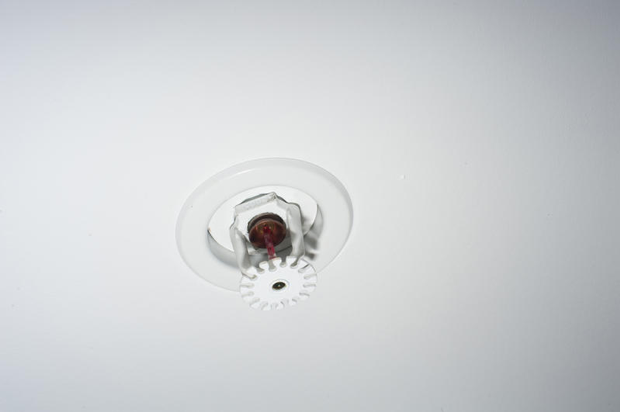
(Source)
But, you can have a fire sprinkler system designed completely hassle-free and in due time if you team up with the right company. Here, we will look at how you can have a fire safety system designed for your residential or commercial property.
How to Get a Fire Sprinkler System Designed?
If you’re inexperienced in designing and installing a fire sprinkler system before, your best bet is to opt for a professional fire protection system company. There are countless companies out there that will help you come up with great fire protection for your real estate, whether residential or commercial.
Talking to experienced and qualified professionals will help you better understand the design process. Furthermore, the expertise and technical prowess of professionals will be extremely useful because you will have the opportunity to customize the fire sprinkler system according to your needs.
Remember that such professionals will automatically meet international building and fire protection system codes and standards. Here are a few steps that professional fire sprinkler system designers will take when designing one:
Choosing a Fire Sprinkler System Type
There’s a small list of fire sprinkler systems with varying configurations. As stated earlier, there are two main types of fire sprinkler systems:
- Wet Pipe Configured Systems
- Dry Pipe Configured System
At the same time, there’s another popular type of fire sprinkler system configuration better known as the “deluge pipe fire sprinkler system.” This type of pipe configuration works best for extremely hazardous places such as oil processing rigs, chemical factories, and so on.
Identification of the NFPA Standard
The NFPA in the US has outlined various fire sprinkler system design and installation standards based on the type of structure and its purpose. So, the fire sprinkler system requirements and standards are different from that of a single-family dwelling/residential space.
For example, professionals turn to the NFPA 13 standard to install a fire sprinkler system in a commercial building. On the other hand, a professional company will either turn to NFPA 13R or 13D standards to install a fire sprinkler system in a residential space.
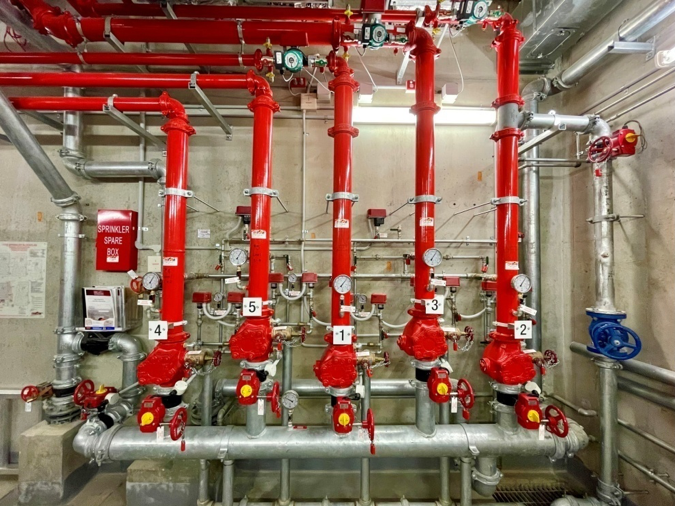
(Source)
Acknowledging Hazards and Risks during Calculations
Before designing a fire sprinkler system, you will have to calculate the hazard levels, fire risks, and so on. The hired professionals will take a look at the structure they plan to fit with a fire sprinkler system. Regardless of whether it’s a home or an office, they will assess the risks of fire and chances of similar hazards. They will then identify the needed water supply and introduce a firm idea on how to secure the whole real estate from fire using a fire sprinkler system. Hence, the designing process will begin.
Get a Fire Sprinkler System Designed: Conclusion
If you want to get a fire sprinkler designed for your commercial or residential real estate, you can contact F2M Fire & Drafting Designs Inc. We have helped countless individuals and businesses get the necessary fire protection systems to keep their belongings commercial assets, and tenants safe.
We can work with you, listen to your needs, and draft a highly personalized fire sprinkler system design. Our expert engineers and architects will incorporate the fire sprinkler system completely hassle-free and in full compliance with building codes/standards.
Give us a call today for a professional consultation.
F2M Fire & Drafting Designs Inc.
1231 Lafayette Ave, Fl 2
Bronx, New York, 10474
(718) 928-3009
info@f2mfadds.com
Hire a Professional Designer for Your Fire Sprinkler System
Do you need to hire a professional designer for your fire sprinkler system? Installing a fire sprinkler system in your building can be a daunting task. Even if you’re excited to give your occupants and tenants peace of mind from a modern fire protection system, you can’t handle such a sophisticated task by yourself. You will need the support of professional designers to make a fire sprinkler system that is right for your building. Fortunately, F2M Fire & Drafting Designs Inc is one of the best companies you will come across in NYC to get a flawlessly designed fire sprinkler system.

(Source)
That isn’t convincing enough for you? Well, we have a few reasons why you should consider opting for qualified, experienced, and professional fire sprinkler system designers in NYC. Keep reading, and you will find out more!
Reasons to Hire a Professional Designer for Your Fire Sprinkler System
Before we kick off the list of reasons why you should choose a professional fire sprinkler system designer, fire protection systems are mandatory in certain businesses. For example, a particular Local Law 26 NYC states that buildings higher than 100 feet must have an active fire sprinkler system and so on.
Plus, you need to offer peace of mind and safety assurance to your occupants and/or tenants against fire hazards. Now that we’re clear on why you need a fire sprinkler system, let us discuss why you require a professional for this task.
Highly Experienced
Without a doubt, the experience of professional designers is very valuable to building the right fire protection system. Their experience allows them to foresee upcoming issues and challenges, creating solutions to them before they become a problem.
Also, if you’re already facing a bottleneck in installing your fire sprinkler system inside your building, the chances are that the professional designer has dealt with similar issues before. So, their experience will be a huge convincing factor in helping you get their services.
Technical & Architectural Prowess
Navigating through a long list of 3D virtual programs and software applications isn’t easy. But for someone like a professionally qualified designer, it’s relatively easy. There are a bunch of software applications and programs that qualified designers to use to create 3D diagrams and virtual map prints of a building to assess the applicability of a fire sprinkler and improve it.
As an inexperienced individual or even a team, you can’t match the technical prowess that a professionally trained designer will have in using the correct software.
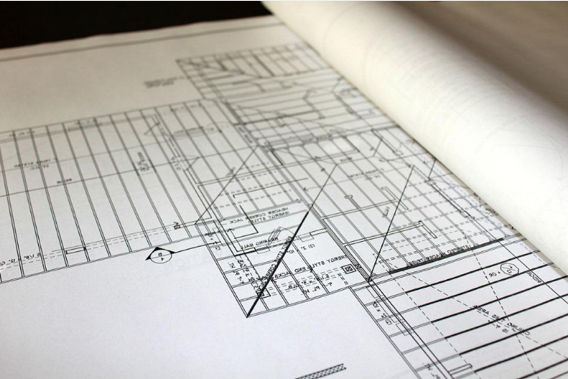
(Source)
International Building Codes & Fire Safety Standards
All buildings are subject to getting fire suppression and fire sprinkler systems in place. The US National Fire Protection Association has made it mandatory for some buildings to put active fire protection in place. The book of rules and fire protection system installation rules are quite precise.
In short, it can be difficult for an average citizen or an unaware building owner to try and comprehend all the rules and codes that apply to their fire protection status. Fortunately, a professional designer is well-versed in those codes.
Hire a Professional Designer for Your Fire Sprinkler System: Conclusion
You can hire professional designers at F2M Fire & Drafting Designs Inc for your fire sprinkler system requirements. We can help you make your building safe and secure against fire hazards and damages by installing modern day fire protection components.
From virtual and 3D diagrams to the right type of pipe configuration, you can place your trust in us. Give us a call at (718) 928-3009 today and schedule a meeting with one of our experienced designers to create the best fire sprinkler system design and layout for your building.
F2M Fire & Drafting Designs Inc.
1231 Lafayette Ave, Fl 2
Bronx, New York, 10474
(718) 928-3009
info@f2mfadds.com
Differences between Commercial & Residential Fire Sprinkler Systems
What type of fire sprinkler system do you require? Is it a residential fire sprinkler system or a commercial fire sprinkler system? Surely, answering that question isn’t that difficult once you take a look at the premises you want the fire protection system for. However, the main question could be “what are the differences between both systems”?

(Source)
In this post, we will try to cover some of the major differences that help professionals distinguish between a residential fire sprinkler system and a commercial fire sprinkler system. Depending on the use cases, both are highly suitable in their application. In simple words, each type of system represents the level of needs and requirements of the building it supports.
What’s a Fire Sprinkler System?
Let’s start with a basic question, what’s a fire sprinkler system? It’s a fire protection system designed to keep the occupants and tenants of a building safe in the event of a fire breakout. The ideal application of a fire sprinkler system is in large residential spaces and commercial buildings where high-value assets and a huge number of people are present. Usually, shopping malls and tall commercial structures (i.e., offices) have advanced fire safety measures in place, including fire sprinkler systems.
· Residential Fire Sprinkler System
A residential fire sprinkler system comprises a water supply, a suitable water distribution system, and an adequate water delivery mechanism. In short, it consists of sprinkler heads, pipes, and water sources.
· Commercial Fire Sprinkler System
They offer protection against fire damages and similar hazards through a complex version of residential fire sprinkler systems. Commercial fire sprinkler systems are more suitable for buildings and other spaces that are susceptible to deal with catastrophic damage in the event of a fire.
Residential Fire Sprinkler System vs. Commercial Fire Sprinkler System
Various Types of Commercial Fire Sprinkler Systems
While there aren’t different types of residential fire sprinkler systems, there are quite a few commercial fire sprinkler systems. Some of them include:
- Wet Pipe
- Dry Pipe
- Deluge
- Pre-Action
Residential Fire Sprinkler Systems Can Decrease Insurance Premiums
Most homeowners see a noticeable reduction in their home insurance when they install a residential fire sprinkler system. So, it’s quite clear that sometimes the motive behind a residential fire sprinkler system isn’t safety but rather getting a cut on the heavy insurance premiums.
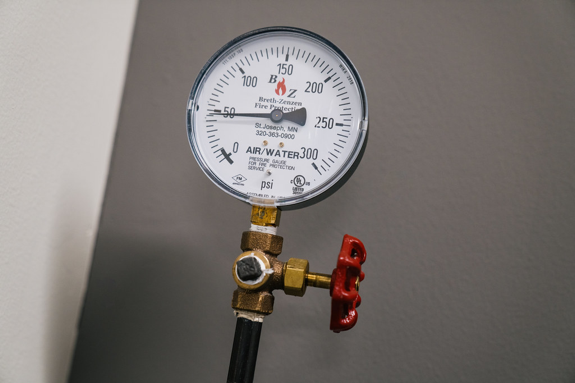
(Source)
Both Fire Sprinkler Systems have Considerable Size Differences
The residential fire sprinkler systems are generally smaller in size compared to large-scale commercial fire sprinkler systems. The primary reason behind that is residential spaces are smaller than big commercial buildings and factory floors. So, residential sprinkler systems don’t’ have to be complicated.
On the other hand, a commercial fire sprinkler system can easily secure big commercial structures such as buildings, factory floors, warehouses, and so on. They’re equipped with rather complex valve controls and fire pump features.
In a nutshell, both categories of fire sprinkler systems differ mainly due to size. Commercial fire sprinkler systems are designed to secure large structures and buildings, while the use cases of residential fire sprinkler systems are more prevalent in small residential areas.
Commercial & Residential Fire Sprinkler Systems: Conclusion
Whether you require a flawless residential fire sprinkler system or a foolproof commercial fire sprinkler system, F2M Fire & Drafting Designs Inc can be your go-to company. We have dealt with fire sprinkler systems in residential, commercial, and industrial sectors. Comprising a team of professionals who have worked with clients big and small, we take great pride in sharing our unmatched experience.
At F2M Fire & Drafting Designs Inc, we do not just ensure the safety of occupants and tenants in a building. In fact, we create a safe and fire protected environment with every fire sprinkler system that we install. Contact us today at (718) 928-3009!
What Makes the Best Fire Sprinkler Designer?
How do you determine if you’re choosing the best fire sprinkler designer? You must have certain qualities to do your job better once you enter a specific field or occupation. However, with fire sprinkler designing, there’s more than that. Fire sprinkler designing is a job that pertains to the safety of different types of structures from fire and what’s within (people, assets, pets, and more). In this article, we will focus on what qualities make great fire sprinkler system designers.
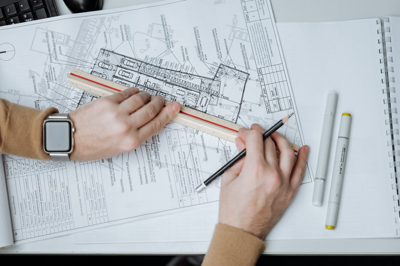
(Source)
What you should know is that many qualities will make a sprinkler system designer exceptional. However, at times of critical installation and designing, the most useful skills include problem solving and thoughtful communication. Here’s what you should know regarding the best fire sprinkler designer to make the right selection for your fire protection needs.
What’s the Role of a Fire Sprinkler Designer?
Fire sprinkler designers do not merely arrive at the commercial building or residential space with pre-made fire sprinkler designs and other fire protection system details. In fact, it is their job to learn about the specific requirements of their clients in light of modern fire protection safety rules and standards and system guidelines.
They aim to establish a rapport with their client that helps them deliver feedback and engage with utmost confidence. This is where the use of communication skills comes into play. They produce drafts, designs, and develop ideas that help prevent fire accidents in commercial, residential, or industrial spaces. While meeting the legal and industry rules and standards, it is the job of a fire sprinkler designer to develop a system that complies with the structure of the space. It also helps in keeping the place fire safe. The system should possess maximum efficiency in contrast with its location and type of deployment.
Furthermore, the designers perform research and relevant analysis. This is because they have to assess the practicality of the projects and system designs that they produce. Gathering client feedback is necessary, and it compels fire sprinkler designers to make sure that their system meets the needs of their clients.
Samples and prototypes are another sub specialty of a fire sprinkler system designer’s job. They also have to coordinate with engineers, technicians, and other important workers during the designing and installation phase of a fire protection system. When there are certain complications, it is the job of a fire sprinkler designer to restate their idea and plan with any necessary changes. Additionally, they are proficient in reading blueprints, assessing 3D AutoCAD diagrams, and offering field support if necessary.
Overall, there are many calculations, planning, and layouts that are the duties of a fire sprinkler designer. How well they fulfill their tasks and duties depends on their skills. The best fire sprinkler system designer is able to complete all the tasks timely and accurately while employing their skills to the maximum.
Skills of the Best Fire Sprinkler System Designers
Now, let’s discuss what skills make the best fire sprinkler designers. Firstly, they possesses communication skills. They should be able to listen to their clients and comprehend what their ideas and suggestions mean practically.
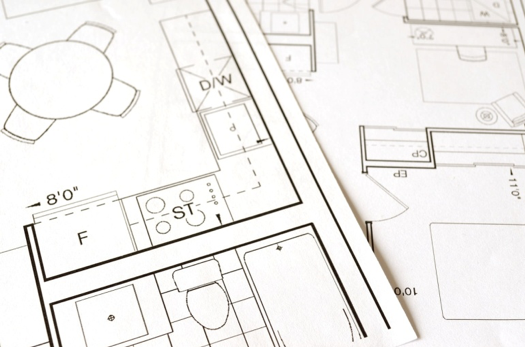
(Source)
By learning what their clients mean, they can use the information to draft the right fire protection system designs. These designs based on accurate communication and information comprehending skills fit the needs of the clients and thus result in greater satisfaction. Moreover, the skill set of the best fire sprinkler designer incorporates the ability to comply with all the legal standards and industry-set codes.
In addition, they possess observational skills, which allow them to see the potential flaws before anyone else. This means that they can deal with faults and errors in the installation and development phase. Problem-solving ensures that they can take prompt actions against any hiccups in the installation or development phase. Sometimes, critical fire protection components can cause major losses and difficulties if not dealt with rightly. However, these skills can make the job much easier for fire sprinkler designers.
What Makes the Best Fire Sprinkler Designer? Conclusion
If you require a fire sprinkler and protection system for your residential or commercial space, you should only choose the best fire sprinkler designers around you. To ensure that you receive the best fire protection designs and related services according to your needs, F2M Fire & Drafting Designs Inc. employs only the best designers.
So, if you want swift fire protection system upgrades or a completely new design, contact F2M at (718) 928-3009. Visit our official website for more information regarding our services. We have experience dealing in the fire protection industry of over 20 years. This puts us ahead of our competitors and the first choice of our customers.
Reference Links:
https://www.ziprecruiter.com/Career/Fire-Sprinkler-Designer/What-Is-How-to-Become
https://www.zippia.com/fire-sprinkler-designer-jobs/skills/
https://www.zippia.com/fire-sprinkler-designer-jobs/what-does-a-fire-sprinkler-designer-do/
Types of Building Fire Sprinkler Systems

What are the different types of building fire sprinkler systems? Sprinkler systems are essential components of a property’s fire safety plan. Besides taking other fire protection safety measures, you should install a state-of-the-art fire sprinkler system. This system suppresses the flames and smoke, preventing the fire from spreading.
Consequently, you will notice a reduction in fire-related damages. Furthermore, it gives people enough time to escape from the building and stay in a safe area until fire services reach the location. There are four major commercial sprinkler systems to consider, each of which offers different features and response rates. These options come at different prices, depending on the features. So, if you want one that offers high levels of protection and a good response time, you should weigh your options carefully.
Types of Fire Sprinkler Systems
Generally, there are four major fire sprinkler systems. These include dry pipe, wet pipe, pre-action, and deluge. All these options are effective to prevent the spread of flames and reducing fire damage. After installing these systems in your property, you don’t have to worry about severe damages in case of fire-related emergencies. While deciding between these options, you should consider their applications and activation process.
1. Wet Pipe System
Wet pipe sprinkler systems are common in commercial and residential buildings. In New York City, you will find these systems in every other home and office. This system starts working when the heat activates the sprinkler head. This triggers the system, and water stored in the pipes releases with pressure. Each sprinkler head has sensors that work independently. This means the heat will trigger sprinkler systems in the affected area. In the case of a false alarm, you bear limited water wastage and related expenses. Wet pipe systems are a low-maintenance option, inexpensive, and are highly recommended for schools, offices, and commercial properties.
2. Dry Pipe System
A dry sprinkler system is different from a wet system because it doesn’t store water in the pipes. Instead, it contains pressurized nitrogen or air that is released when the system detects a fire. The sprinkler head has sensors that identify a fire to activate the valves. After the release of gases, the water fills in the pipe and eliminates the remaining flames or smoke. This system is more complicated and expensive than a wet pipe system. However, it is suitable for regions with cold climates due to frozen pipes. If you use a wet pipe system in cold climates, the water will freeze, blocking the response in an emergency.
3. Pre-Action System
Pre-action systems are similar to dry pipe sprinklers. The only difference is the activation system. Pre-action systems include two-step activation. When the system detects smoke or a fire, it opens the valves allowing water to flow into the pipes. Then, the sprinkler heads release water over the fire after detecting the affected area. This reduces the risks of damage during a false alarm. What happens is, the system verifies the fire twice, effectively protecting your assets from water damage. Pre-action systems are helpful in locations where accidental discharge can result in irreparable damages. For instance, in data centers, libraries, and museums, the management uses pre-action fire sprinkler systems to protect precious items.
4. Deluge System
The deluge sprinkler system is another advanced version of the dry pipe system. But, this system is in contrast to the pre-action system. In this system, the sprinkler heads are always active. This system doesn’t include a heat-sensing device in the head. But, you need to include an external heat or smoke sensor with this system to turn on the valve. When the sensors detect heat, it fills the water in the pipes and releases it from all the active sprinkler heads. This creates a flooding effect in the entire location. Many industries utilize deluge sprinkler systems to protect their highly expensive and high-precision machinery. Many industries also use flammable liquids along with this system for rapid recovery.
Choosing the Best Fire Sprinkler System
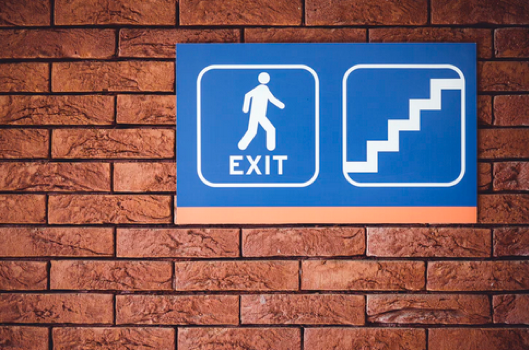 Every sprinkler system that we just mentioned contains special features and unique benefits. Therefore, doing your research before installing a system is highly important. Consider evaluating the options by comparing their pros and cons. The choice of a sprinkler system depends on the specific environment. Also, you can use different systems strategically and secure an entire building. For a fire sprinkler installation plan, you will need a professional who can inspect the area and identify the best locations for installation. Contact F2M Fire and Drafting Designs Inc. and consult with a professional team. They will guide you about how you can enhance the security of your commercial and residential property.
Every sprinkler system that we just mentioned contains special features and unique benefits. Therefore, doing your research before installing a system is highly important. Consider evaluating the options by comparing their pros and cons. The choice of a sprinkler system depends on the specific environment. Also, you can use different systems strategically and secure an entire building. For a fire sprinkler installation plan, you will need a professional who can inspect the area and identify the best locations for installation. Contact F2M Fire and Drafting Designs Inc. and consult with a professional team. They will guide you about how you can enhance the security of your commercial and residential property.
Installing a Sprinkler System
While creating a fire safety protection plan, you cannot exclude fire sprinkler systems. These systems offer a rapid response after detecting a fire and smoke in the facility. But before choosing a fire sprinkler system, it is essential to evaluate the options, maintenance, installation, and design of the different systems. A professionally trained and experienced technician will guide you about factors to consider before choosing a system. Furthermore, they will install the system to ensure maximum security and utmost safety for your assets and employees.
Types of Building Fire Sprinkler Systems: Conclusion
Do you want to install fire sprinkler systems in your facility? If so, you can consult a professional at F2M Fire and Drafting Designs Inc., and they can install a high precision system at your home and office.
Give us a call at 718-928-3009 right now and talk with our experts.
McCormick Estimating Tools & Fire Sprinkler Systems
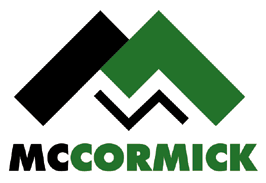
McCormick Systems offer fire sprinkler system design tools that are highly accurate in estimating the costs to build out and install a new fire sprinkler system. There are numerous levels of these tools, including labor, pricing, and different installation workflow methods. Professionals can estimate different floors separately with multiple takeoffs. This increases the flexibility and speed of deriving an estimate. The tool helps with the audit trail and allows view takeoff by generating customized bids and breakout.
McCormick Systems is a Chandler, Arizona-based company founded in 1979. The company’s main office is divided into different divisions offering various solutions such as accounting, shipping, support, construction, marketing, and development. Also, they offer a dedicated learning center that helps beginners understand the tool.
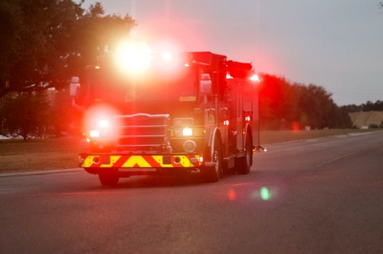
Benefits of McCormick Estimating Systems Software
Here are some benefits of McCormick Estimating Systems software for fire sprinkler systems:
1. Four Levels of Solutions
The company offers a Windows-based estimating system suitable for industrial, residential, and commercial estimation. Their software contains four different levels of application. These include WIN 1000, WIN 3000, WIN 4000, and WIN 6000. Every set is suitable for different task levels. They have an individual level for small and large fire sprinkler installation companies.
2. Array of Features
McCormick estimating software includes details about the different necessary components of a fire sprinkler system. Contractors and installation companies can utilize this tool for accurate service estimation. This tool can import prices from different manufacturing companies. Experts can search through the database and find the best prices for items. The tool also offers other features, such as time management, material billing, change order tracking, digital takeoff, and design-build estimating.
3. Smooth Integrations
Integrating McCormick Systems with popular tools is pretty easy. Fire sprinkler installation companies can include QuickBooks, AutoDesk, Sage Timberline, and Excel with this estimation system. Furthermore, they can contact the vendor to resolve integration problems. For efficient use, the company provides video tutorials. This tool directly communicates with other project management applications. That way, companies can enhance their collaboration and handle accounting.
In addition, they can manage and align every fire sprinkle design task.
4. Quick Material Cost Comparison
This tool is incredible for cost estimation, and it helps with the quality arrangement of equipment and materials for different projects. Fire security system installation companies can also import prices from different suppliers and compare. They can calculate the total cost of the entire project and instantly begin the installation process. Estimation software gives access to costs faster than any other tool. Check different websites and choose the best materials and equipment for fire sprinkler installation.
If you want to consult with an expert fire sprinkler system estimator, you can contact F2M Fire & Drafting Designs Inc.
5. Accurate Recalculations
After collecting prices and quantities, technicians can use them for the bidding process. As a result, they can create accurate bids. Also, they can perform grueling manual calculation processes and estimate accurate expenses without a hitch. Furthermore, the software enables them to immediately recalculate the estimates after altering price and quantities. The software automatically calculates costs after modifications. This tool has numerous benefits for fire sprinkler system design. Furthermore, experts can anticipate errors in the system for accurate cost estimation. Using this tool, a fire sprinkler installation team reduces the risk of mistakes.
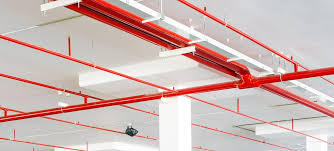
6. Central Storage and Tracking of Information
Another reason to use this tool for estimation is centralization. The installation team can edit, store, and track all information through a central database. The formulas, prices, and productivity factors that can be misplaced are secure in a single data repository. Technicians don’t have to store information in different spreadsheets. Tracking history and changes in cost data is a tough job when a professional works in disparate flat files.
7. Efficient Monitoring of Construction Costs
Estimation software helps calculate takeoff quantities and prices. Furthermore, it helps prepare bids, but it offers more benefits than cost estimation. Technicians use this tool for documentation and track changes in fire sprinkler system design. Fire sprinkler installation teams can visualize every problem with the estimation process when they are equipped with McCormick Estimating Systems Software.
McCormick Estimating Tool & Fire Sprinkler System Design: Conclusion
At F2M Fire and Drafting Designs Inc., we create fire sprinkler system designs after estimating costs using the McCormick software system estimating tools. That’s how we offer our clients highly accurate costs and solutions. Using this high-precision tool allows us to plan a smooth installation process without any surprises. Because of this efficient automated application, we reduce the chances of errors as well.
Call our experts today for a free consultation about your fire sprinkler system design project.
F2M Fire & Drafting Designs Inc.
1231 Lafayette Ave, Fl 2
Bronx, New York, 10474
✆ (718) 928-3009
info@f2mfadds.com
Commercial Fire Sprinkler System Design
What is the process of commercial fire sprinkler system design? There are many things that you will take into account when designing a commercial building fire safety system.
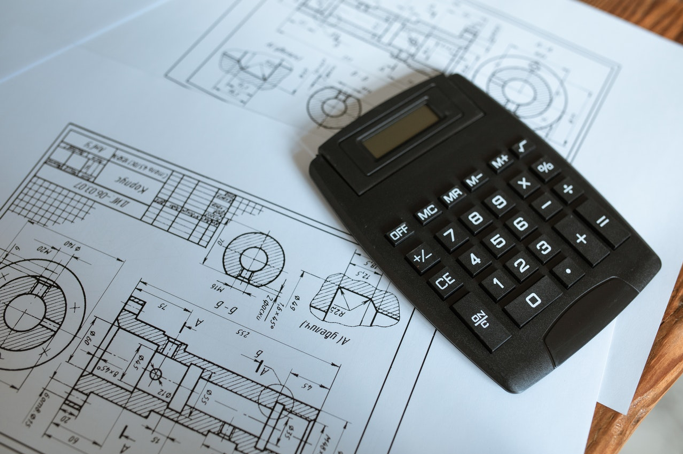
(Source)
One essential thing for adding fire protection to any commercial space, whether a retail shop, center, warehouse, office, educational institute, office or an entire building, are fire sprinkler systems. These are the most important equipment for fire safety guidelines that ensure protection in the case of a fire that’s starting to spread. The automatic water discharge from the sprinkler heads (automatic heads) can extinguish the fire before it actually spreads.
Designing a Commercial Fire Sprinkler System
Most of the fire protection plans incorporate a fire sprinkler system as it is a major commercial application to ensure fire resistance. Choosing the right fire sprinkler system is not an easy task. On top of that, if you lack the experience and don’t know about the fire safety standards of the industry, here’s some basic knowledge for you. Although it doesn’t cover overly complex and technical information, you’ll swiftly get an idea of what is necessary during a commercial fire sprinkler design process.
Fire can cause loss of human lives, permanent health injuries, resource loss, asset damage, building, and structural damage, along with many penalties based on poor fire protection measures. Therefore, fire protection remains a top priority of all commercial building owners for their safety.
For employees of a business, it can be difficult to work with peace of mind when there is a risk of fire hazards. Moreover, you can adopt a swift approach and hire the best professionals to design a fire sprinkler system for your commercial space to make them feel safe. Here’s what the design process takes into account.
Fire Systems & Code Compliance
Code compliance is a prerequisite that no professional fire sprinkler designer can ignore. The only thing that differentiates the most effective and functional fire sprinkler systems from the poorly maintained and running ones is code compliance. The NFPA, in addition to the local fire safety rules around your region, will provide the main criteria, instructions, standards, and codes for installing a new fire sprinkler system.
It is the objective of every trustworthy, efficient, and reliable fire sprinkler designer to make sure that their designs and installation suggestions comply with the NFPA and local authority-set rules and standards. By keeping the codes and standards of fire safety in mind, you will maintain a higher fire resistance for your commercial space. According to the codes, regular inspections after proper installations are essential.
Water Supply for the Commercial Fire Sprinkler System
The main concern regarding the application of a fire sprinkler system is water which is necessary to surpass the fire. The sprinkler heads discharge water through the nozzles upon detecting smoke or heat on a certain level. However, it is intermittent to leave the water supply out of the equation. If you plan to adopt a fire sprinkler system, you will have to make sure that you acquire the right water sources. Is it an underground tank that will require pressure pumps for additional water flow consistency? Do you plan to use the nearest municipal water supply? Well, in any case, the water supply will go through the water flow test to make sure that all necessary measures are in place to maintain the pressure during water discharge. In compliance with NFPA 13, a sprinkler system should comprise an automatic water supply.
Choosing the Type of Fire Sprinkler System
Following the adoption of water supply and proper measures, the next step is to determine what kind of fire sprinkler system does the commercial space need? Is the space in a cold area where a dry pipe sprinkler system may prevent water or gas freezing in the pipes? Or is it in an arid or hot urban area where a wet-pipe sprinkler system will ensure effective and quick fire suppression? Your fire sprinkler designer will be able to make the best choice according to your needs.
Determining the Hazard Level & Water Capacity Needed
The team of professional fire sprinkler designers determines how much water will be necessary to control the spread of a fire. This involves the use of conceptual tools, including density/area curves, occupancy hazard, and design area.
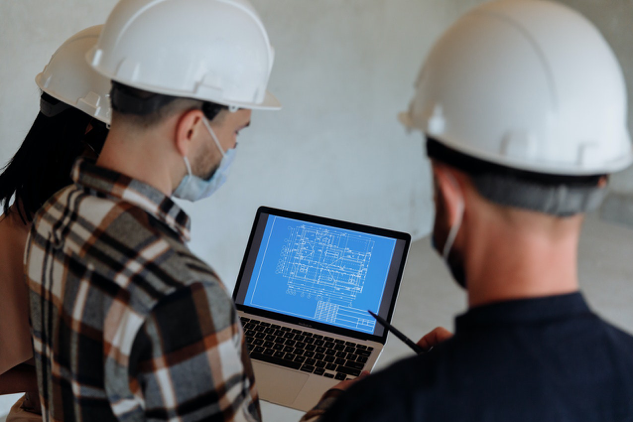
(Source)
Layout and Coverage of Fire Sprinkler Heads
Since the design process of sprinkler systems is iterative, there are other calculations involved than those above. The sprinkler coverage and flow rate play a critical role in fire suppression. How much time it takes for a specific amount of water to discharge out of the sprinkler heads will determine how quickly the system can suppress a fire. The professional designers will consider the overall spread of sprinklers over a certain area to ensure maximum efficiency.
Commercial Fire Sprinkler System Design : Conclusion
Fire & Drafting Designs Inc. employs the best resources at its disposal to make sure that every client and their space receive maximum fire safety. In fact, we have the best technicians, engineers, and other helpful workers to deliver the best fire-resistant system for a building or space.
Do you want to ensure that your fire sprinkler system complies with the industry standards and local laws & codes? Well, we aim to make sure that all the fire safety practices are in compliance with the NFPA standards and other necessary regulations.
Call us at (718) 928-3009 to meet with an expert from Fire & Drafting Designs Inc. You can visit our official website and go through the list of fire protection design & drafting services that we offer.
F2M Fire & Drafting Designs Inc.
1231 Lafayette Ave, Fl 2
Bronx, New York, 10474
Reference Links:
https://www.wbdg.org/design-objectives/secure-safe/fire-protection
https://www.qrfs.com/blog/374-the-elements-of-fire-sprinkler-system-design/
https://www.kmbdg.com/news/fire-protection-engineering-2/
https://www.buildings.com/articles/35584/fire-protection-system-design
Who Designs Fire Sprinkler Systems?
Do you have a commercial or residential project and need to know who designs fire sprinkler systems? Fire sprinkler systems were invented about 120 years ago. The first one was not as modern and sophisticated as today’s conventional, modern system. Since their existence, sprinkler heads have remained a crucial element of a building’s infrastructure. They not only prevent thousands of deaths but also save businesses from financial collapse. In the unwanted occurrence of a fire outbreak, they are the first line of defense inside buildings.
Pioneers of the Fire Sprinkler System
In 1885, John Wormald of the UK wrote the world’s first-ever rules for the installation and design of automatic fire sprinklers. Thus, the British standards of sprinklers seem to differ from the Americans’. American fire prevention rules for sprinkler systems are according to the National Fire Protection Association, or (NFPA). This official organization sets the standards for sprinkler systems across the USA.
Sprinkler installation professionals need to abide by these standards and be watchful of each building’s design. They need to specifically configure each fire sprinkler system so that it complies with the facility’s design to ensure that it is high functioning and saves lives.

Water is an Essential Source
Water remains one of the most effective fire fighting tools available, and sprinklers allow you to splash water right into the center of a huge fire during its early stages of emergence. The water gushes out of the sprinkler head that attaches to the sprinkler pipes, which run across every ceiling inside the building.
Sprinkler heads have the unique ability to detect fire automatically, discharge water, and operate an alarm. Furthermore, they operate another alarm signal that goes directly to the fire brigade center, indicating a fire outbreak.
Sprinkler Heads
A typical sprinkler head has a body that connects to the valve seal that holds the water back. A glass bulb holds the valve seal in place. Inside the glass seal, a liquid expands in response to increasing temperatures.
As the expansion increases in correlation to the rising fire, the bulb becomes unable to withstand the outward pressure of the expansion, causing it to burst, and the valve seal opens as a result. This allows the water to flow into the water distribution deflector. The overwhelming outcome is a gush of water spreading over the fire in a predetermined pattern.
You can find a wide variety of sprinkler heads that operate at different temperature resistance. Each resistance is identifiable by the color of the bulb. The varying designs of sprinkler heads allow you to cope with different types of fire risks, temperatures, and operational requirements.
You can mount the conventional sprinklers in either the upright or the pendent position. Each sprinkler design accounts for an array of different sprinkler placements. Some systems also include the sidewall sprinklers, mostly because of aesthetic reasons. They help keep the ceilings free of extending pipes.
Each sprinkler head can cover about 17 meters of water distribution in hazardous fire risks and nine square meters for ordinary fire risks. However, you can also install additional coverage to sprinkler heads and make them cover up to 21 square meters.
Protection from Smoke
In a fire outbreak, very few deaths are a result of direct flame contact. The biggest threat comes from the inhalation of smoke. During combustion, fire victims have no option but to inhale harmful gasses such as carbon monoxide, hydrogen chloride, hydrogen cyanide, and much more. Combine these toxic gases with the associated heat, and it makes for a deadly environment.
A quick response sprinkler system can minimize the life-threatening intensity of harmful gasses. They stop the smoke from developing and keep it at bay, offering valuable time to evacuate the building.
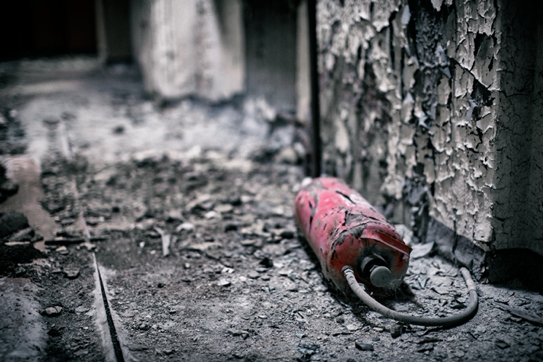
Overview of a Sprinkler System
Sprinkler system installation requires a precise and accurate design of the pipes. Professional and certified technicians need to ensure that the right pressure and flow of water distribute across each sprinkler head. The water source can come from the town’s main supply or even a private water reservoir. Supply source depends on the risks of potential fire threats of a facility.
Additionally, a control and alarm valve allows for the automatic flow of water to the sprinkler heads. Generally, there are five sprinkler system types, each requiring a different valve arrangement. Having static water in the pipes is undesirable, which is why technicians use a dry system. This fills the pipes with compressed air until there is a fire emergency.
Who Designs Fire Sprinkler Systems: Conclusion
F2M offers the best and most modern fire sprinkler system design services in New York and across the USA. We provide you with services that are backed by 20 years of experience in the fire protection and design industry.
By retaining our services, you will not only have access to the best fire protection layout and design, but also access to expert consultants who will personalize your system according to your requirements.
Contact us at (718) 928-3009, or visit our website for more information.
How Does a Fire Sprinkler System Work?
How does a fire sprinkler system actually work? Fire Sprinklers are an essential apparatus for protection against fire damage, be it property or people. Fire sprinkler systems are usually present in commercial, industrial, and residential spaces. The probability of a fire starting in such places is always high due to several reasons, such as electrical wiring and heating appliances.
Other major reasons for fires in households are accidents, such as leaving the stove unattended. Overall, a fire sprinkler system ensures safety from fire hazards. By protecting workers from severe injuries, it helps companies avoid lawsuits. Moreover, it protects your family or tenants from injury while preventing damage to their possessions.
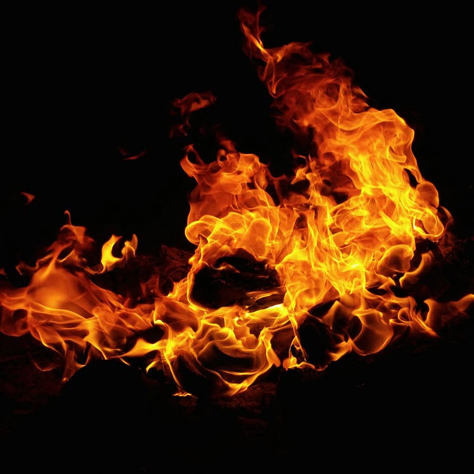
(Source)
Despite various benefits, a few misconceptions reduce people’s trust in sprinkler systems. These minute yet, misleading misconceptions are as below.
Fire System Misconceptions
- Smoking a cigarette will trigger fire sprinklers
- Smoke detectors trigger fire sprinklers
- Immense water damage is the consequence of using a fire sprinkler system
- All the fire sprinkler heads activate when one triggers the alarm
- Automatic shutdown of fire sprinkler system occurs after extinguishing the fire
It’s time to address these misconceptions. Read on to learn how a fire sprinkler system works in real life.
How does a Fire Sprinkler System Work?
Heat-Detection and Activation
Contrary to popular belief, smoke is not what causes a room’s temperature to rise, and trigger the fire sprinkler system. Hence, preparing toast in the kitchen or smoking in the living room won’t trigger the fire sprinkler system.
Sprinkler heads normally contain a glass bulb with a glycerin-based solution. This solution expands and bursts on exposure to certain ranges of temperature. When a fire ignites and is not controlled or extinguished, the fire starts to spread. The blaze heats up the air, and as the hot air rises above, it comes in contact with the ceiling, where it continues to spread.
This contact with heat bursts the glass bulb, triggering the fire sprinkler(s). The head of the fire sprinkler, which detects heat, douses the fire. A pipe, leading to the water source, releases a pressurized discharge as the trigger of the fire system opens the valve attached to the pipes.
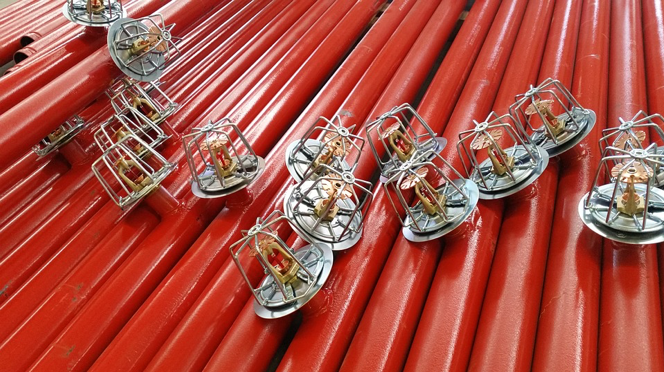
(Source)
Fire sprinkler systems may connect with pipes that already contain water or have a connection to the main water supply. Similarly, an electronic device may control the valve or there may be a manual switch to turn the fire sprinklers on and off.
With pressure in the water flow, water dispersion is wide. Hence, sprinklers utilize a greater range to douse the fire.
After Dousing Fire
You can control fire sprinkler systems via fire alarms, switches, and the valves. Contrary to popular belief, you have to manually shutdown the fire sprinkler system after the fire is completely out. Thus, another misconception cleared. Similarly, these gadgets also allow you to stop fire sprinklers before your property faces excessive water damage.
A generic misconception among people regarding fire sprinkler systems is that all sprinkler heads start discharging water, even if only one head triggers the fire alarm. This is definitely not the case if you have the latest fire sprinkler system. That is, unless you opt for the “deluge” fire sprinkler system, which releases water through all the sprinkler heads when a single fire alarm goes off.
Maintenance, Repair, and Testing of Fire Sprinkler Systems
Regular inspections are a vital part of the fire safety system. Inspections of the gauges, gadgets (manual switches), pipes, bracings, valves, and electronic devices take place on quarterly and even monthly basis.
Repairing any faults or errors in the fire sprinkler system can compensate for any potential losses in the future. Therefore, inspections and maintenance are necessary to employ a fire safety system to its full extent.
How Does a Fire Sprinkler System Work? Conclusion
F2M Fire & Drafting Designs Inc. offers an impressive variety of fire sprinkler system design services. F2M designs gold standard fire sprinkler systems for office buildings, personal residences, rental properties, or any other commercial, residential or industrial building. We work with you every step of the way, customizing the system per your requirements and budget.
Give us a call at (718) 928-3009 to inquire about our services, current projects, and to consult about your fire sprinkler design project. Email us at info@f2mfadds.com.
Fore more information, visit our main website at: https://www.f2mfadds.com/
References & Related Links:
- https://www.explainthatstuff.com/firesprinklers.html
- https://home.howstuffworks.com/home-improvement/household-safety/fire-sprinker-system.htm
- https://www.gausman.com/Our-Company/News/entryid/263/how-do-fire-sprinklers-work-in-commercial-buildings
- https://blog.koorsen.com/how-do-fire-sprinklers-work
- https://www.keystonefire.com/blog/how-it-works-fire-sprinkler-systems/
- https://fireprotectionblog.com/how-do-fire-sprinklers-work/
What are the Differences in Commercial & Residential Fire Sprinkler Systems?
Commercial & Residential fire sprinkler systems have a few key differences which we will discuss in this article. The primary use of fire sprinkler systems is to extinguish and restrict the spread of fires in a commercial, industrial, or residential space. Inexperienced building owners, either commercial or residential, make the mistake of assuming that all fire sprinkler systems are the same. They also presume that the application of every fire sprinkler system is the same for any type of building.
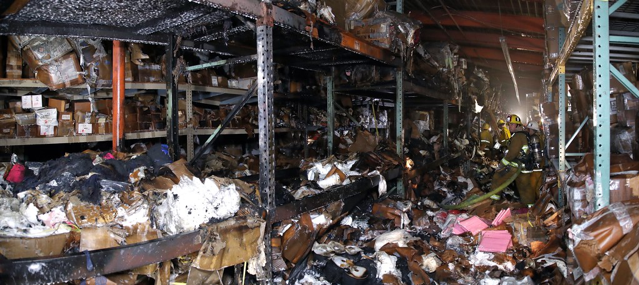
(Source)
This misconception leads building owners to choose the wrong types of fire sprinklers and suppression systems. Often, this leads to major losses and damage. Let’s go over the differences between them, starting with commercial fire sprinkler systems.
Commercial Fire Sprinkler System
In the event that a fire spreads through the property, commercial fire sprinkler systems prevent extensive fire damages in offices and public spaces. These systems restrict the spread of fire and reduce the smoke, allowing workers to exit the space safely until the fire department services arrive. Some of the types of commercial fire systems are below.
4 Types of Commercial Fire Sprinkler System
- Dry Pipe
This type of fire sprinkler and suppression system includes pipes containing pressurized nitrogen or air. When the fire sprinkler head activates, it releases air. This triggers the discharge of water from the sprinkler heads, which suppresses the fire and restricts the spread.
These are costly and need consistent maintenance, but they are suitable for cold climates as well. Because the pipes in this system contain pressurized air, the chances of water freezing are low.
- Wet Pipe
Cheap and low-maintenance wet pipe fire sprinklers systems are traditional. These pipes contain water, and when the alarm rings, they release pressurized water through each sprinkler head independently.
- Pre-Action
When a smoke or heat detector sends the signal, the pre-action valve opens, allowing water to flow into fire sprinkler pipes. Then, each sprinkler head discharges water. This is a good option when it comes to false alarms. They offer protection from unnecessary water damage.
- Deluge
All sprinkler heads are open in this fire sprinkler system. Upon external heat detection, the water flows through all the sprinkler heads. Applications for this type includes commercial places that involve highly combustible and flammable material and practices in daily operations.
Benefits of Fire Sprinkler Systems in Commercial Buildings
Commercial fire sprinkler systems are a requirement in some states. Therefore, it is necessary for building owners to install and maintain fire sprinkler systems in offices and workplaces. They offer numerous benefits to commercial buildings.
- Assets and corporate property safety
- less long-term corporate expenses
- safe and confident work staff and employees
- control on the spread of fires in emergencies
Residential Fire Sprinkler Systems
Residential fire sprinkler systems have the same purpose as the ones in commercial buildings. The fire sprinkler systems may even be the same in some aspects. Nevertheless, there are relative differences in commercial and residential fire sprinkler systems.

(Source)
Sometimes, homeowners install and maintain fire sprinkler systems to benefits home insurance premiums. This is because the house becomes less susceptible to damage or accidents. Thus, insurance coverage allows low premiums. These are “insurance discounts,” and commercial building owners receive them as well.
Sometimes, fire sprinkler installation takes place during construction. But if a house requires fire sprinkler systems post-construction, the concept of “retrofitting” emerges. Everyone living in the house or apartment feels safe. This also makes you a responsible homeowner or landlord to your tenants or family.
Major Differences in Commercial & Residential Fire Sprinkler Systems
In the US, NFPA Codes and Regulations vary for commercial and residential buildings. Therefore, fire sprinkler systems comply with specific rules and codes in both types of buildings. The design of commercial and residential-level fire safety systems varies as well.
A commercial fire sprinkler system will have the design and installation to prevent fire damage and risks according to space. For example, restaurants, offices, warehouses, shops will have risk assessments for fire emergencies. This usually allows the proper employment of resources to control fire in such commercial spaces.
Nevertheless, residential fire sprinkler systems are similar to each other. Contrary to the large commercial spaces, small households have smaller fire sprinkler systems.
The costs of fire sprinkler systems in commercial and residential spaces also significantly varies.
Differences in Commercial & Residential Fire Sprinkler Systems: Conclusion
When designing a fire sprinkler system for your new project, the differences between residential and commercial fire sprinkler systems will play a major role. F2M Fire & Drafting Designs creates custom fire suppression system designs using state of the art technology and the most modern techniques. All designs are gold standard code compliant, and they licensed across the USA in many states.
Give us a call at (718) 928-3009 to inquire further or email us at info@f2mfadds.com.
Visit our main website for more information: https://www.f2mfadds.com/
References & Related Links:
Fire Sprinkler System Design in New York: Things You Need to Know
Do you need a fire sprinkler system design in New York? The best protection against fire hazards comes from getting a suitable fire protection system according to your building or space. Fire sprinkler systems are among the most popular fire protection methods. Due to automation in advanced fire sprinkler systems, it is easy to douse and restrict the flames. It keeps the fire from spreading, which saves lives and prevents excessive fire damage to properties.
Potential fire risks keep increasing daily because of the persistent rise in the use of technology. Faulty wiring, excessive heat generation in computing machines, or even flammable products in an office or industry – all these pose a viable fire hazard. Therefore, they require the implementation of strict safety measures.
Below, we will discuss how fire sprinkler systems work.
How a Fire Sprinkler System Works
With an adequate distribution of sprinkler heads over the area, when heat or smoke sensors trigger the alarm, the fire sprinkler system activates. The glass bulb in a sprinkler head bursts due to heat exposure and water flows from the sprinkler heads.
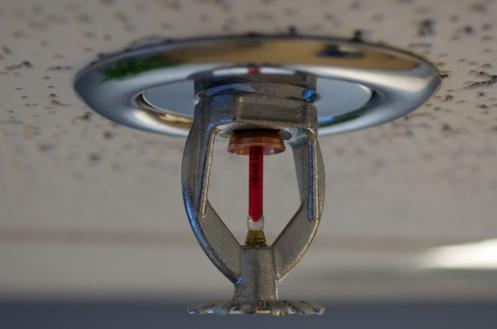
(Source)
Water comes from a series of pipes that are fixed into the building. These pipes connect to a fire pump that maintains a standard pressure of water as sprinkler heads release water to douse the fires.
Further, control valves and drain systems provide a wider control over the fire sprinkler system. It becomes easy to detect if a valve is open or shut, which then leads to the rectification. These control valves and drains are in a “valve room” that is always under maintenance and thoroughly ready for fire emergencies.
Fire Sprinkler System Design in New York: Things to Remember
There are a few vital key points that will help you start designing a fire sprinkler system in New York or any other place in the US.
Purpose of Water Supply
Automatic fire sprinkler systems heavily rely on a consistent supply of water. The source of water supply for the sprinkler system is, therefore, of paramount importance. A municipal water supply is a feasible option to connect your fire sprinkler pipes too, for example, fire hydrants.
Other than the municipal water supply, you can rely on a few other sources to supply water to your fire sprinkler system. These other sources can be:
- Gravity Tanks
- Water Towers
- Underground Water Tanks
- Ponds, lakes, rivers, or even reservoirs
These static sources of water supply will require more pressure for water extraction (underground water tank). Therefore, they consume more power.
Rules and Regulations
The National Fire Protection Association (NFPA) of the US imposes certain rules and regulations. They affect various aspects of a fire sprinkler system. An example of the codes and rules of the NFPA is the NFPA13 rule. Under this rule, fire sprinkler system installation in a residential space must comply with specific guidelines. You can find a list of other standards and codes here.
Types of Fire Sprinkler Systems: Environment of the Building
The type of fire sprinkler system you choose for your building is essential as well. For example, if your building is in a warm climate or a heated place, the wet pipe system is the best. This system has water in the pipes all the time. Once the alarm rings, they release water to douse the fires.
For unheated buildings in colder regions, a dry pipe system is best. These pipes contain air or nitrogen in them. When the fire alarm rings, air releases from the pipe, and water begins flowing through the sprinkler heads. Since the pipes contain air, you don’t face problems with water freezing in the pipes.
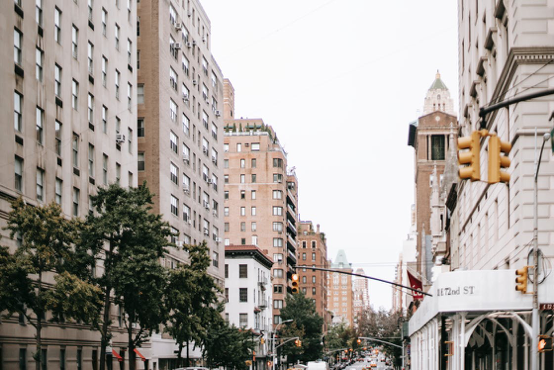
(Source)
In places holding highly combustible materials, an effective fire sprinkler system is necessary. This system turns on all the sprinkler heads when a fire emergency occurs. This way, all the sprinkler heads release water, dousing the fire as quickly as possible to prevent excessive fire damage. It is essential for places with flammable material and processes.
Calculations
Before designing a fire sprinkler system, certain calculations are necessary. These calculations determine the water flow rate, the discharge rate, the coverage area of every sprinkler head, etc. It allows for an effective design of the fire sprinkler system in a building, enabling an operational fire safety system.
Fire Sprinkler System Design in New York: Consult A Design Professional
It is critical to get in touch with qualified engineers and architects of fire sprinkler systems if you are designing one for your building in New York. At F2M Fire & Drafting Designs Inc., we are certified professionals who can guide your fire sprinkler system design process from start to finish.
Call us at (718) 928-3009 for a free consultation & quote. You can also email us at info@f2mfadds.com.
Sources:
- https://sprinklerage.com/fire-sprinkler-design/
- https://www.qrfs.com/blog/374-the-elements-of-fire-sprinkler-system-design/#water
- https://www.nfpa.org/Codes-and-Standards/All-Codes-and-Standards/List-of-Codes-and-Standards
- https://www.nfpa.org/Public-Education
- https://www.designingbuildings.co.uk/wiki/Overview_of_automatic_sprinkler_system_design_and_operation
- https://blog.societyinsurance.com/7-tips-ensure-building-sprinkler-system-will-protect/
Fire Sprinkler System Design
Fire sprinkler systems serve a great purpose of preventing fire damage in commercial buildings and households. Different types of fire sprinkler system design are available, each of which has varying working techniques. Choosing the best fire sprinkler system means designing a system of fire suppression that suits your needs and covers every angle of safety in terms of fire hazards and building code.
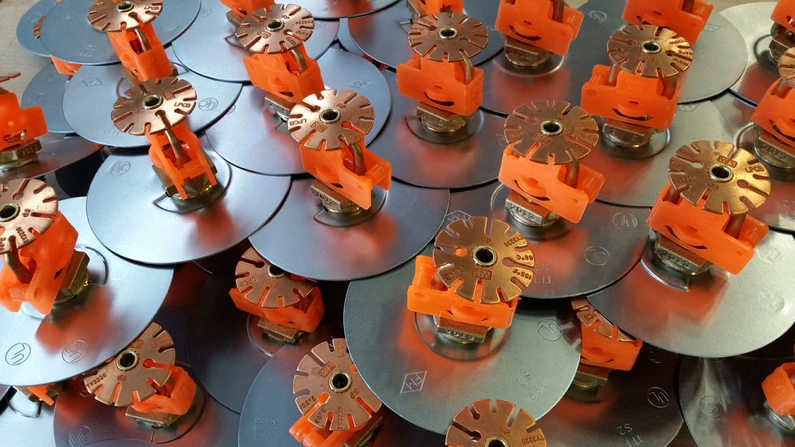
(Source)
The potential benefits of installing and maintaining a fire sprinkler design are various; some are below.
- Safety from physical injuries
- Corporate security
- Security of property from fire damages
- Confident workers in fire hazardous places
- A good reputation in terms of responsibilities as a landlord and industrial or commercial building owner
However, designing a fire sprinkler system might not be easy. Therefore, you can contact F2M Fire & Drafting Designs INC. through our website to benefit from quality services of fire system designs. Here are a few things to keep in mind when designing a fire sprinkler system.
Main Types of Fire Sprinkler Systems
Dry Pipe
This type of fire system operates slowly and needs thorough maintenance. For spaces such as warehouses, garages, and any other unheated places or spaces, “dry pipe” fire systems are the best. They have compressed air inside the pipes. Using numerous supply systems such as nitrogen bottles, electronic air compressors, this system lets out the air upon activation. This leads to a pressurized release of water, which extinguishes the fire.
Wet Pipe
Easy to install and maintain, this system of fire sprinklers contains water in the pipes at all times. Contrary to popular belief, water release can be simultaneous. This is the most common type of fire system in heated spaces.
Deluge
This type of fire sprinkler system has applications like places containing highly combustible and flammable components. These spaces may serve storage or operational purposes. With all sprinkler heads open at all times, a signal from an individual device such as a heat sensor or a smoke sensor triggers the release of water.
Fire Sprinkler System Design: Water Supply
Fire sprinkler systems heavily rely on the quality and quantity of water supply. Water is the main component for extinguishing and restricting the spread of fire. NFPA requires you to have an automatic water supply in the fire sprinkler system.
This ensures an uninterrupted supply of water and with no human interference. The need for professional engineers and designers is paramount. The sources for water supply can vary and include reservoirs, pools, water towers, ponds, or gravity tanks. Each type of water supply requires proper calculations pertaining to the capacity and the flow. These calculations determine how much water can flow from the source and the pressure it can generate.
Thus, it helps to accurately select and place pipes to ensure a safe and operable fire sprinkler system design. Calculations relate to flow test, for which the formula is as such:
Q=29.83 x C x d2 x
The foundation of fire sprinkler design lies in the water supply. Thus, a careful analysis of this factor is a must.
Buildings that Require Fire Sprinkler Systems
The next step in designing a fire sprinkler system is to know the building type. Whether it is a commercial, industrial, or residential building will help to determine the best fire sprinkler design.
The designers of the fire sprinkler system will cooperate alongside engineers and architects to draft out a fire sprinkler design. The final blueprint will be in accordance with NFPA rules and codes. The most common type of NFPA standard in use for designing a fire sprinkler system is the NFPA13.
Other Factors
Occupancy hazard is another factor. This helps measure the level of hazards that potentially exist. The amount of energy capable of releasing in the case of fires determines how much water is needed. This makes it easier to design the fire system. The products and components present in the building are subject to the term “occupancy hazard.”

(Source)
Further, the area of design also matters. The level and positioning of the building can make it difficult to supply water to all sprinkler heads at once. Therefore, considering the worst-case scenario helps in identifying any potential hindrances that can occur in the operation of the fire sprinkler system.
Call F2M For Your Fire Sprinkler System Design
At F2M Fire & Drafting Designs Inc., we are expert fire sprinkler system designers with over 20 years of experience in the NYC and tri-state area. Visit our website to learn more about our services and see some of our past projects.
F2M Fire & Drafting Designs Inc.
1231 Lafayette Ave, Fl 2
Bronx, New York, 10474
(718) 928-3009
Sources
